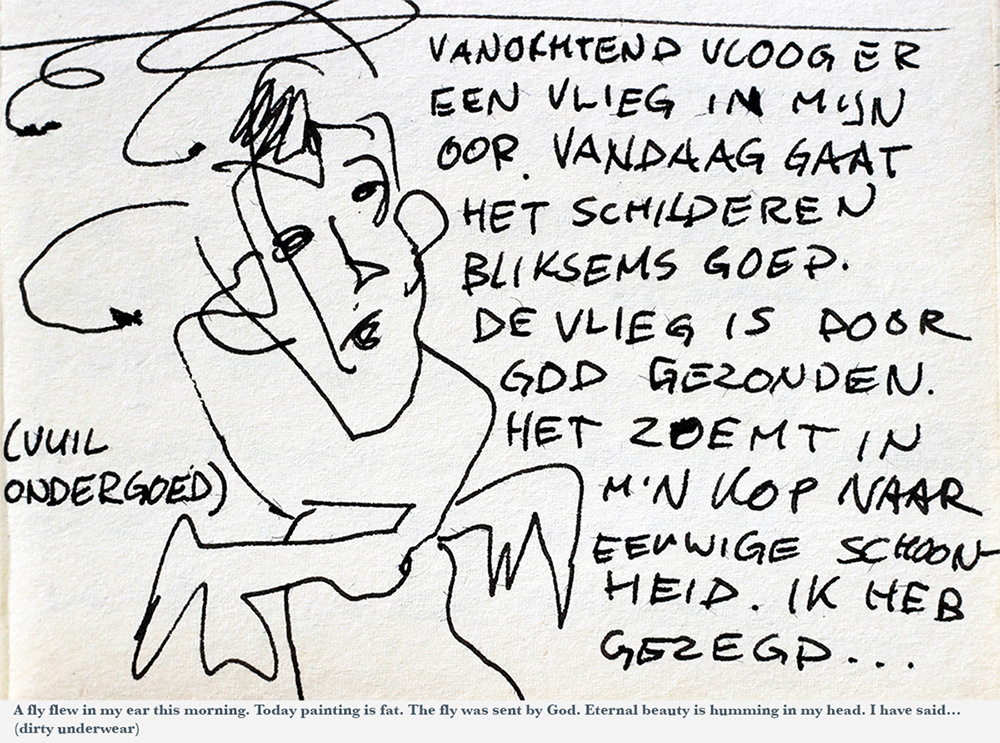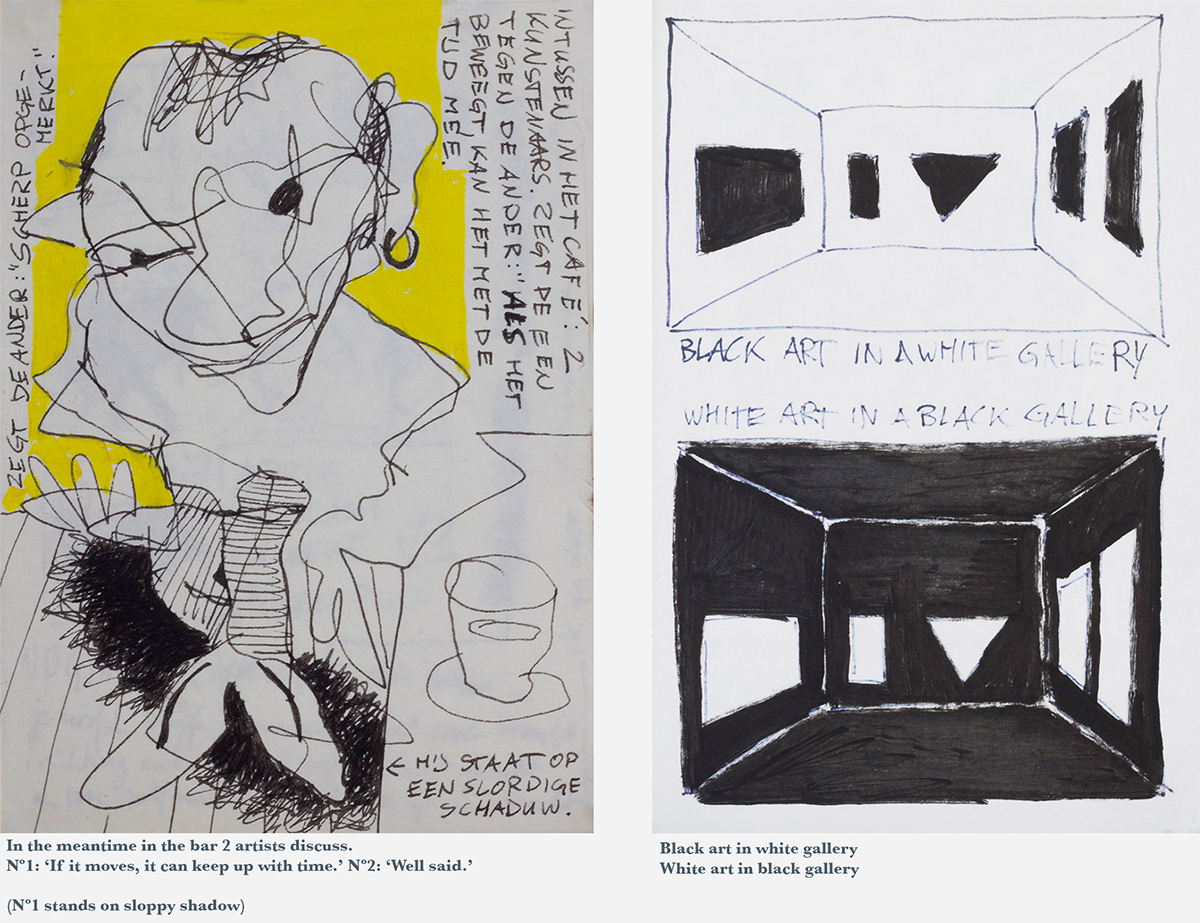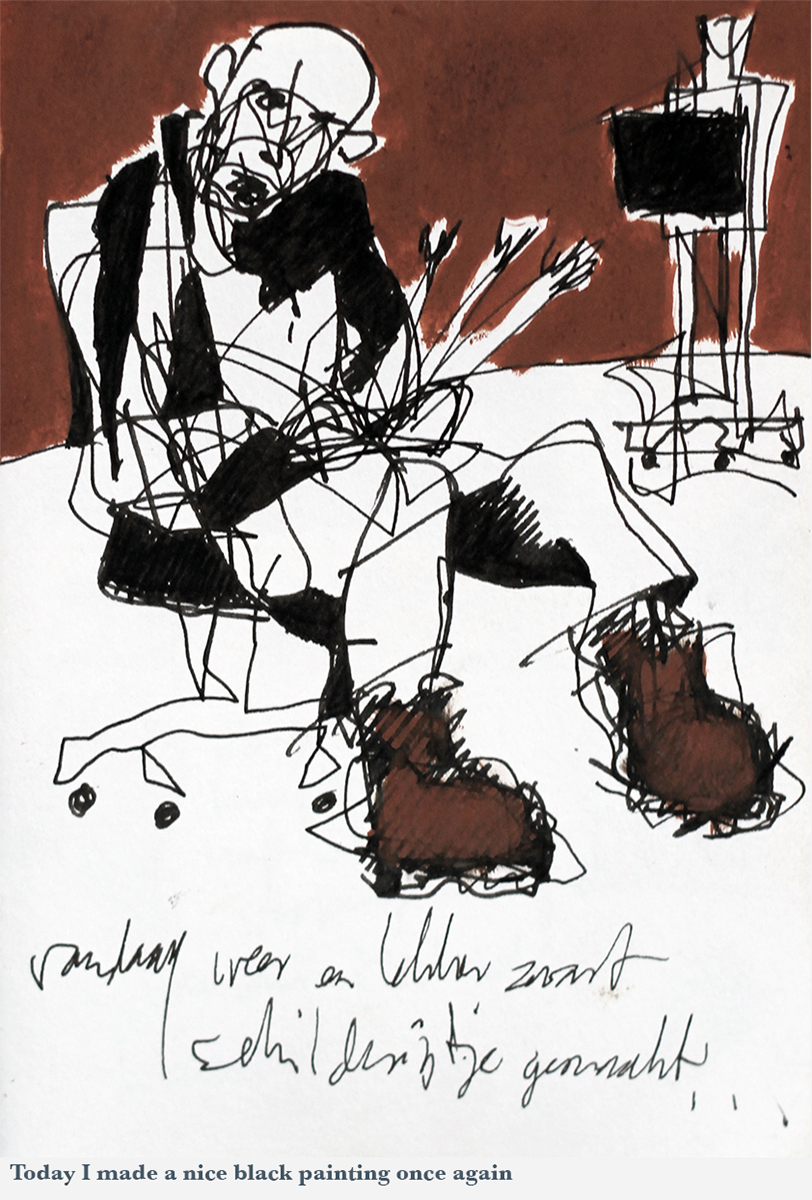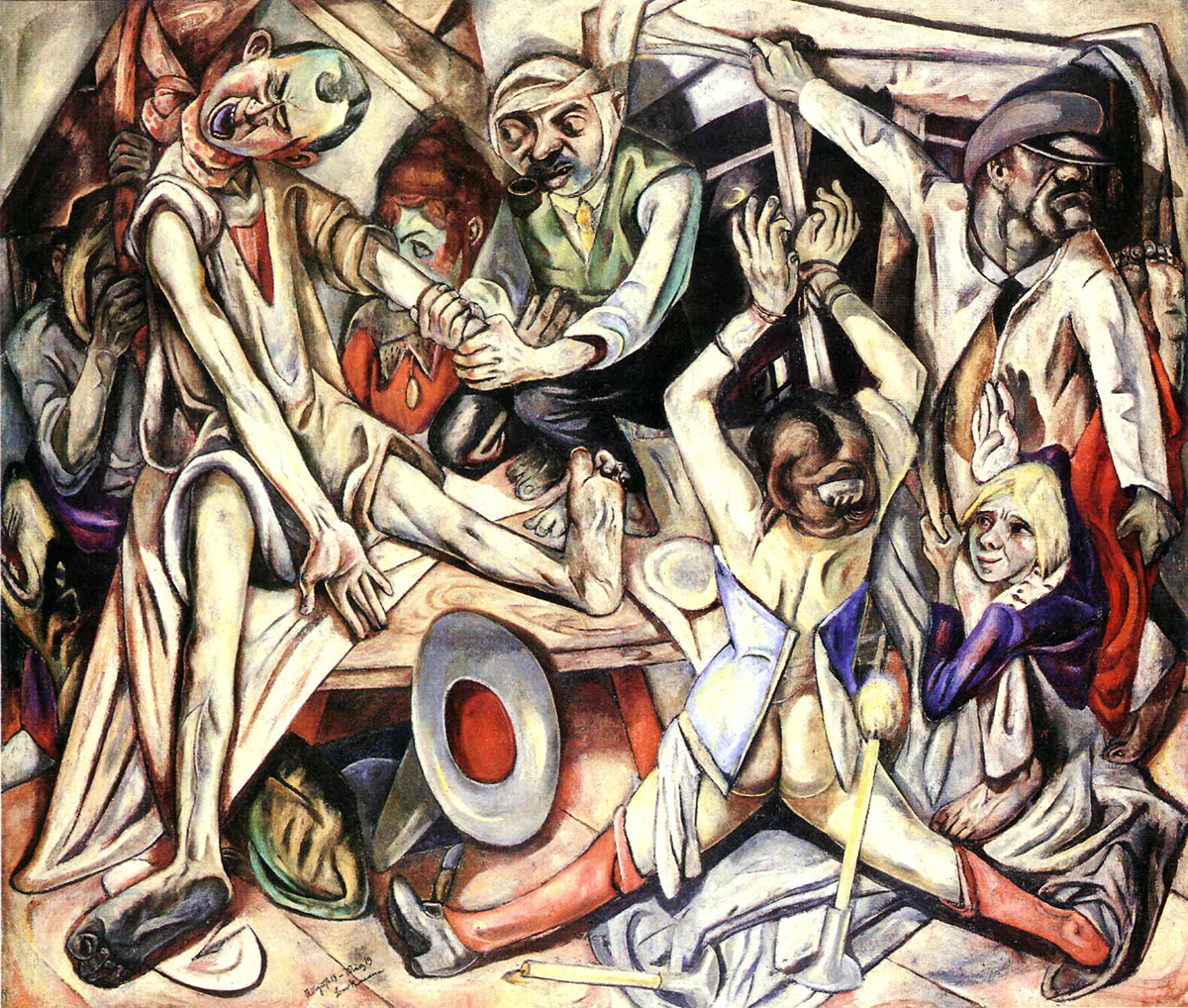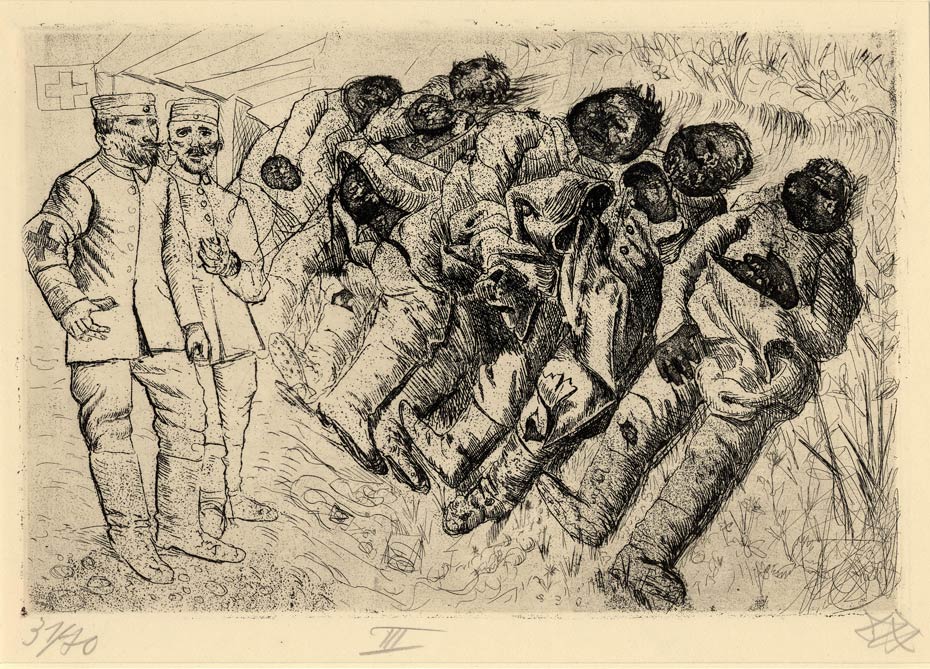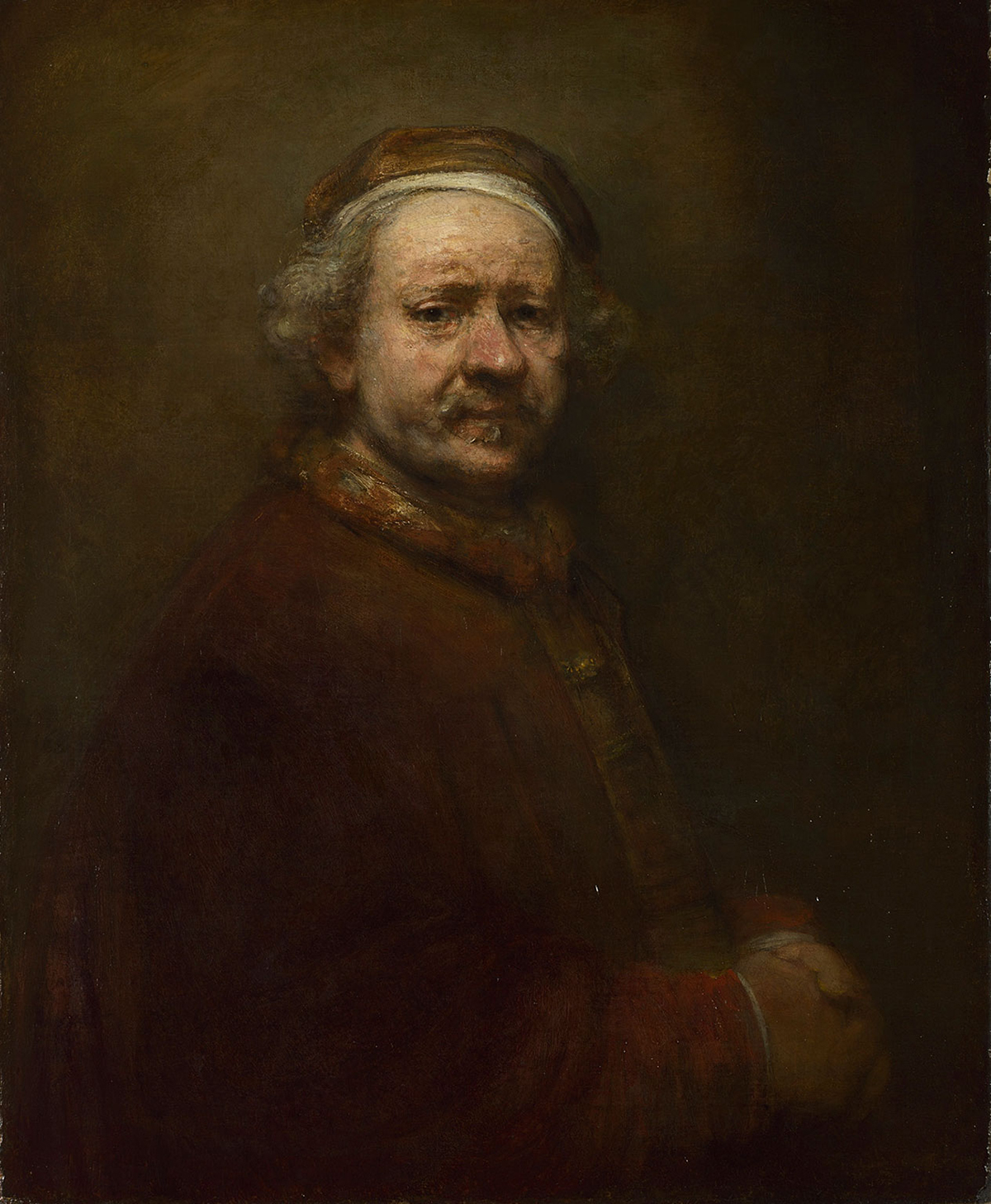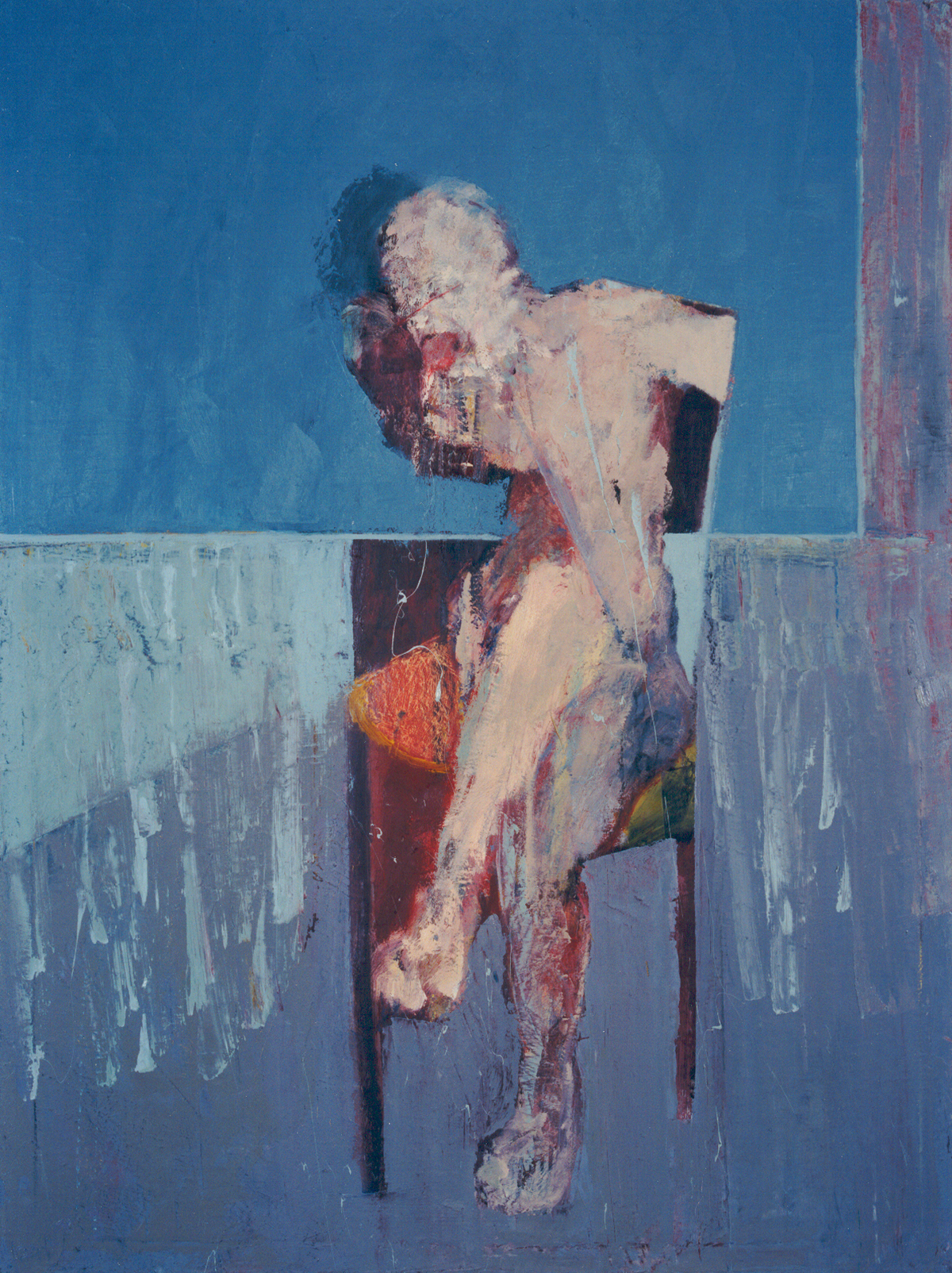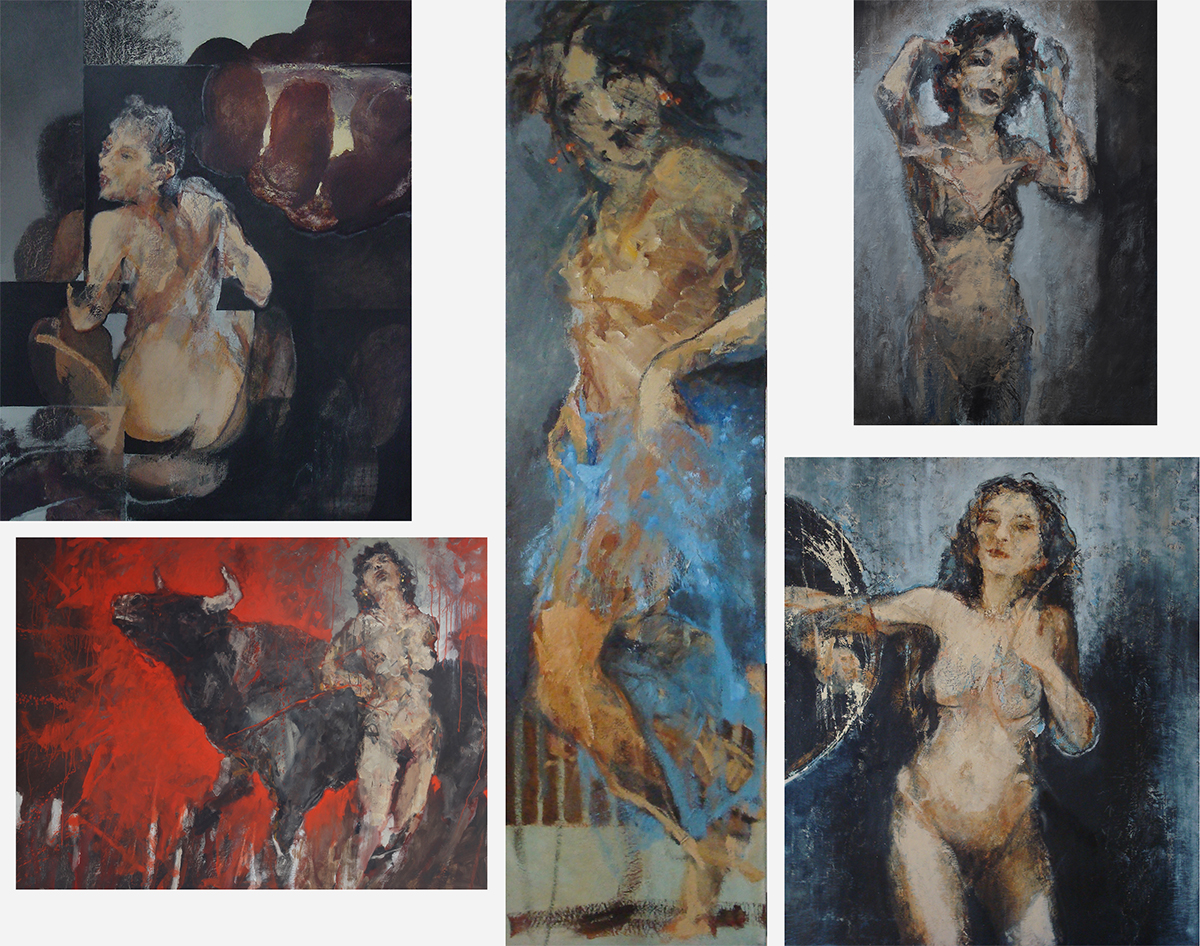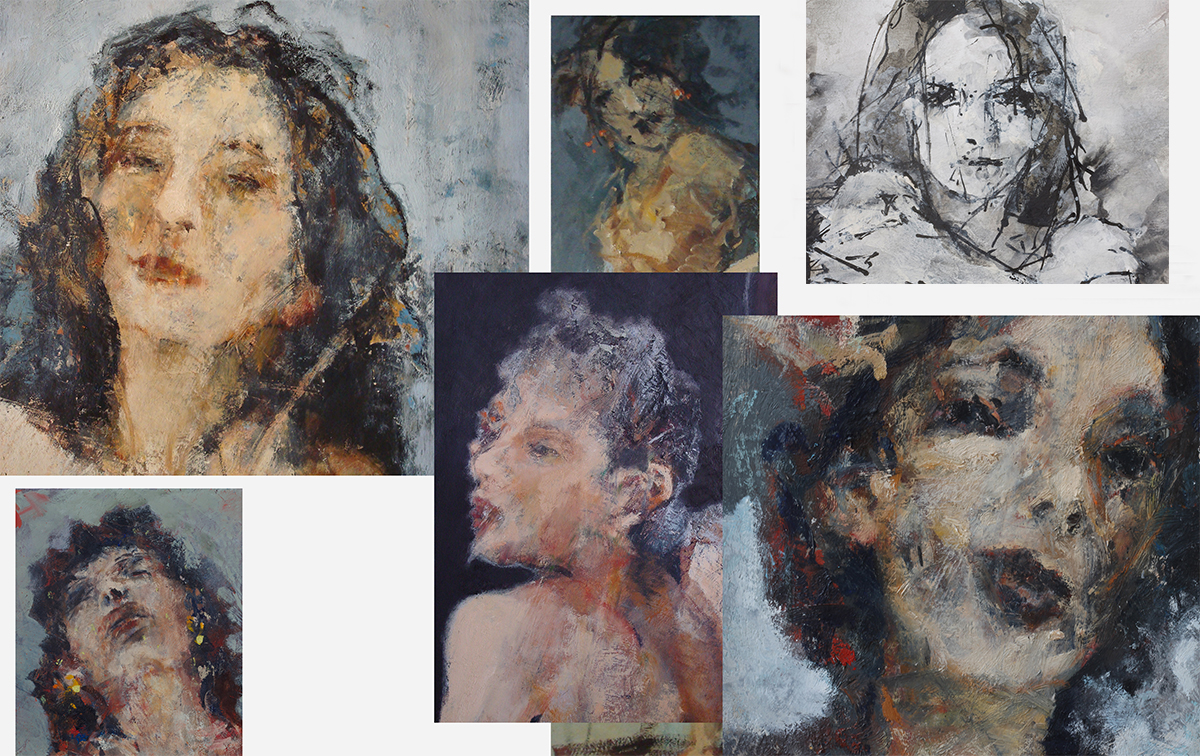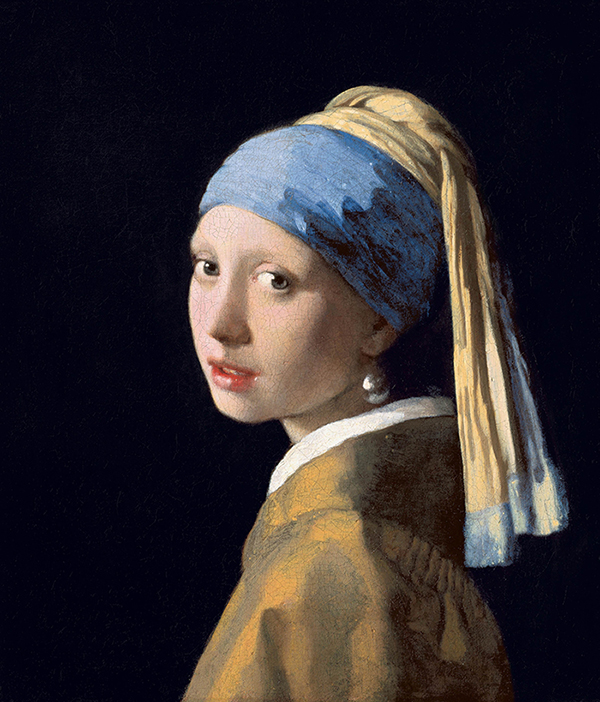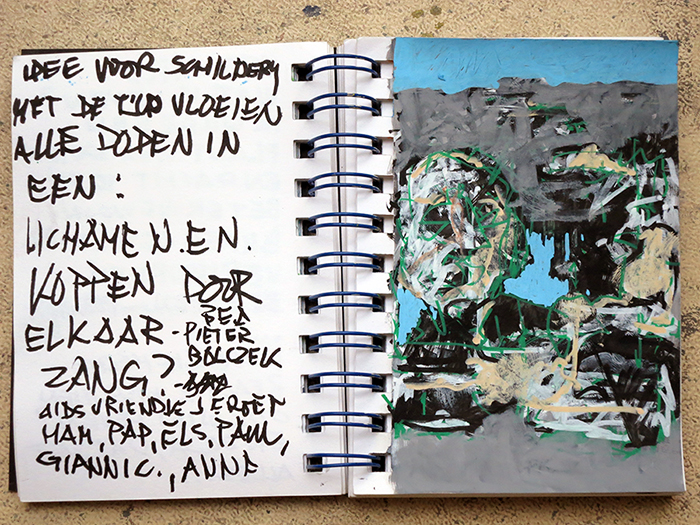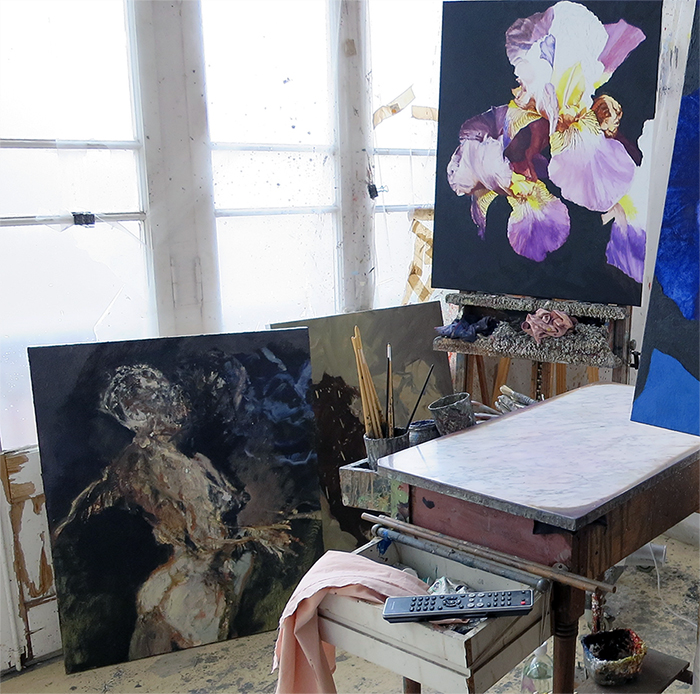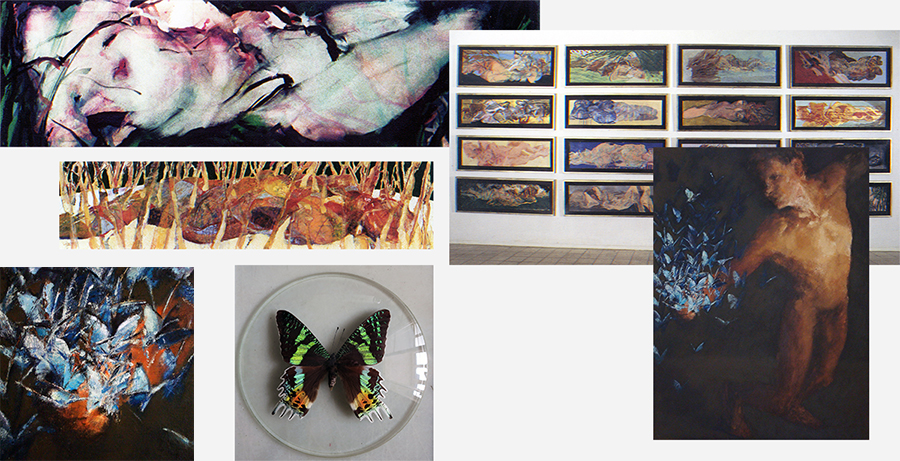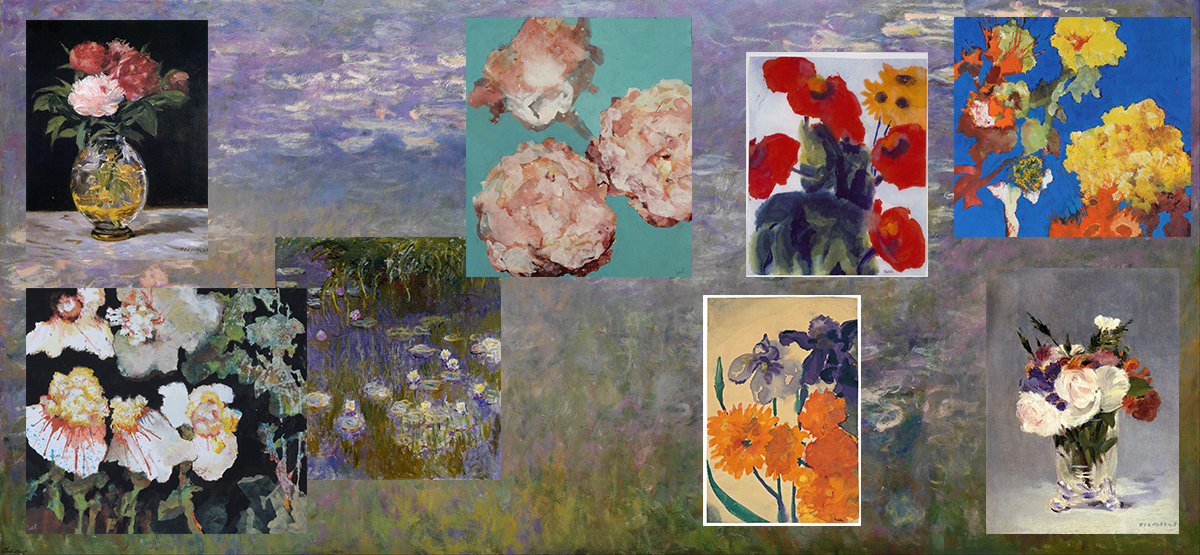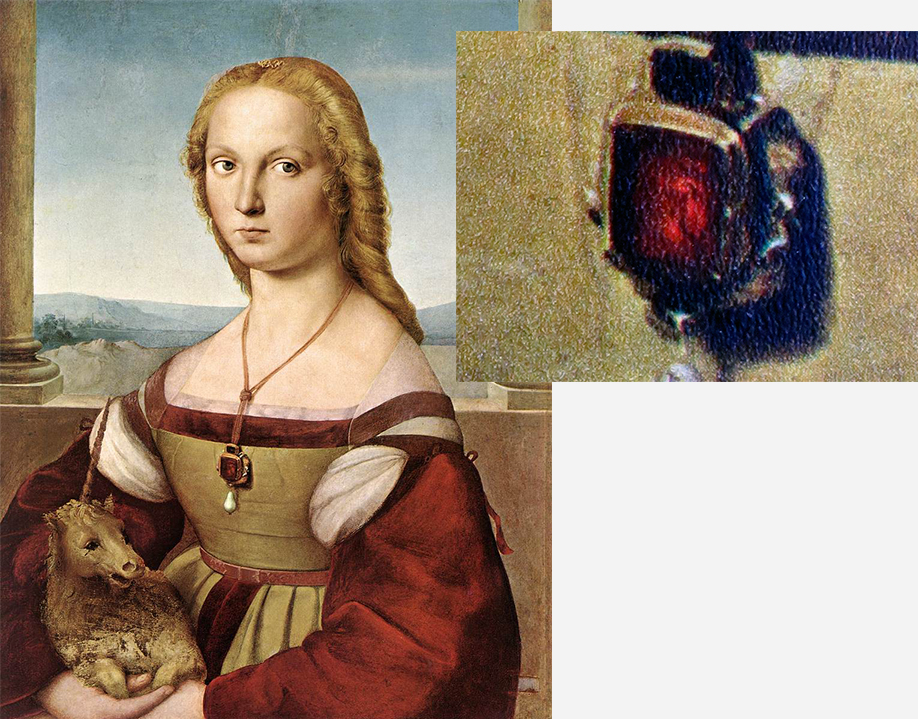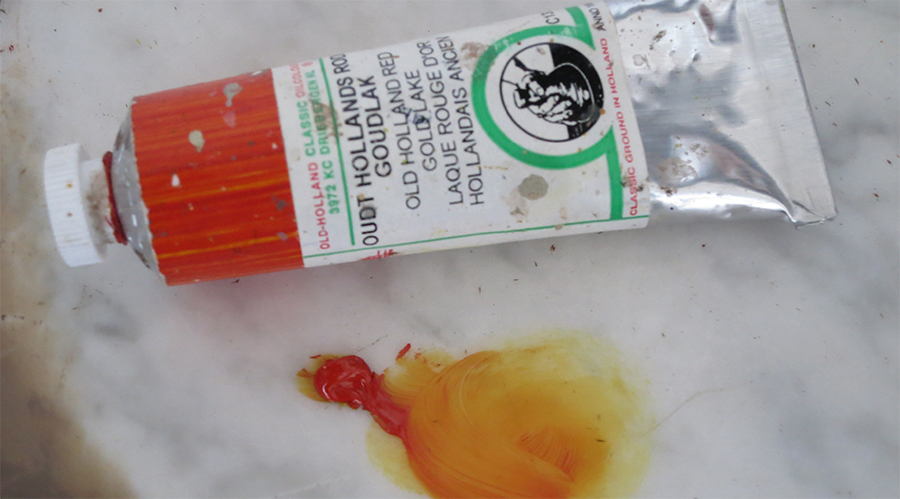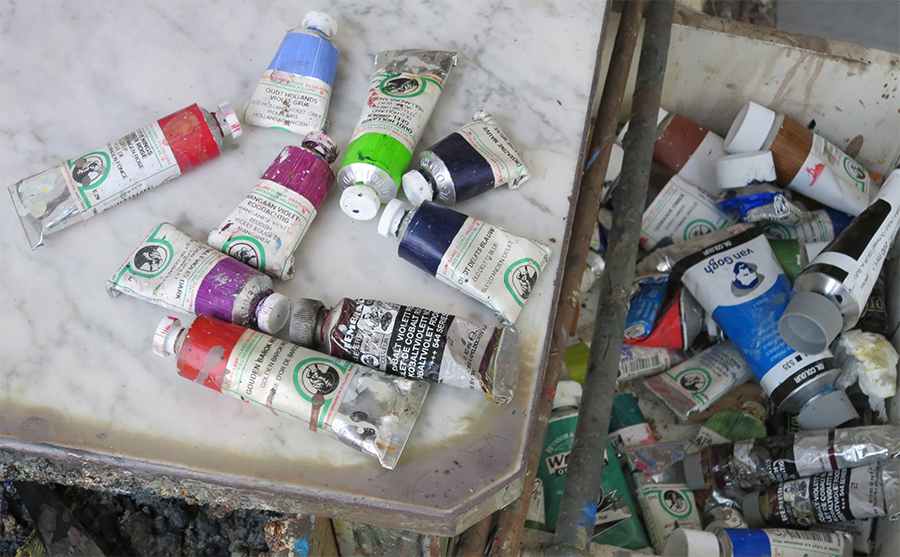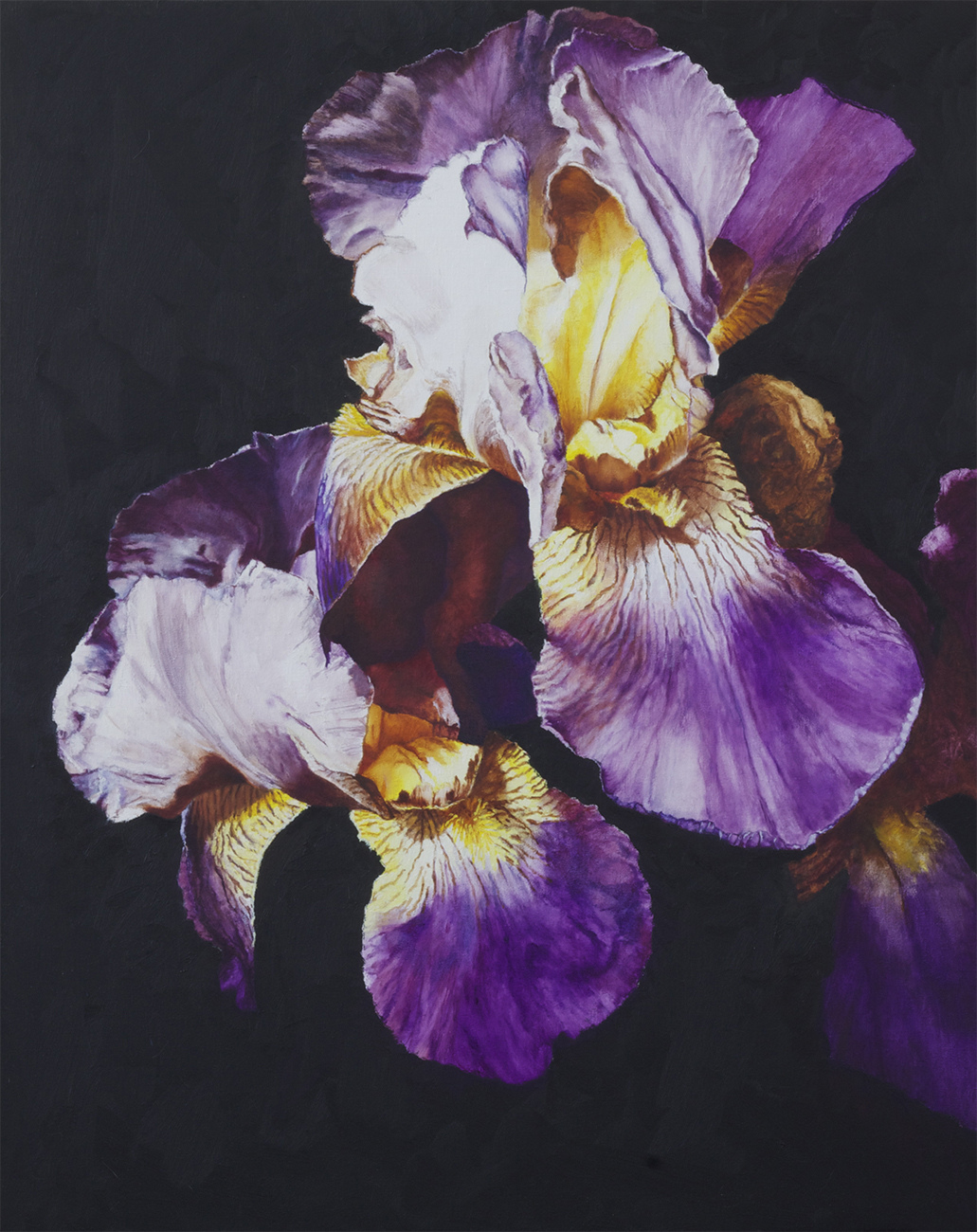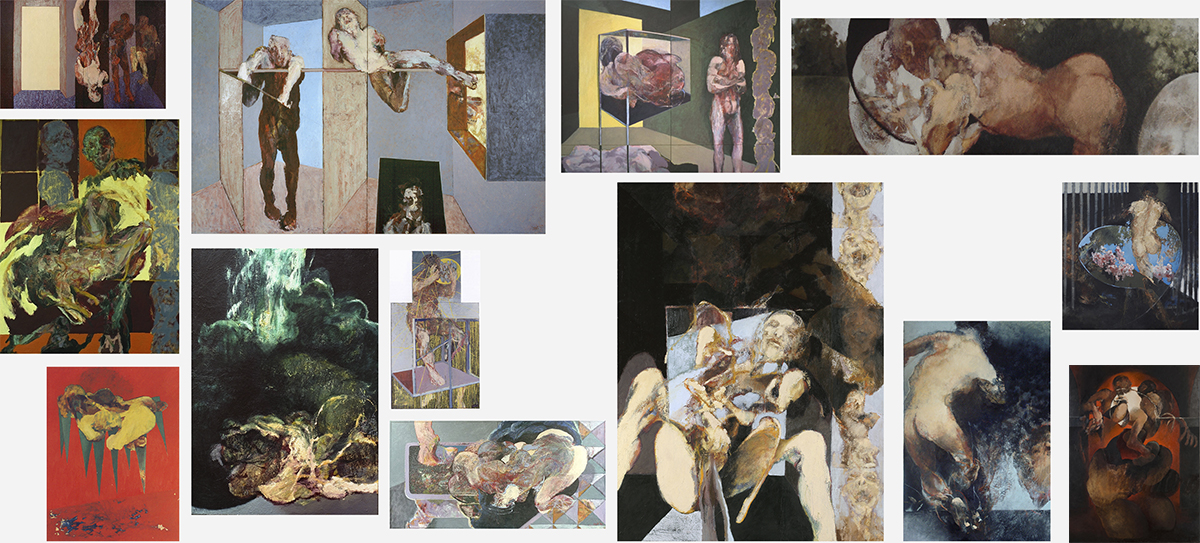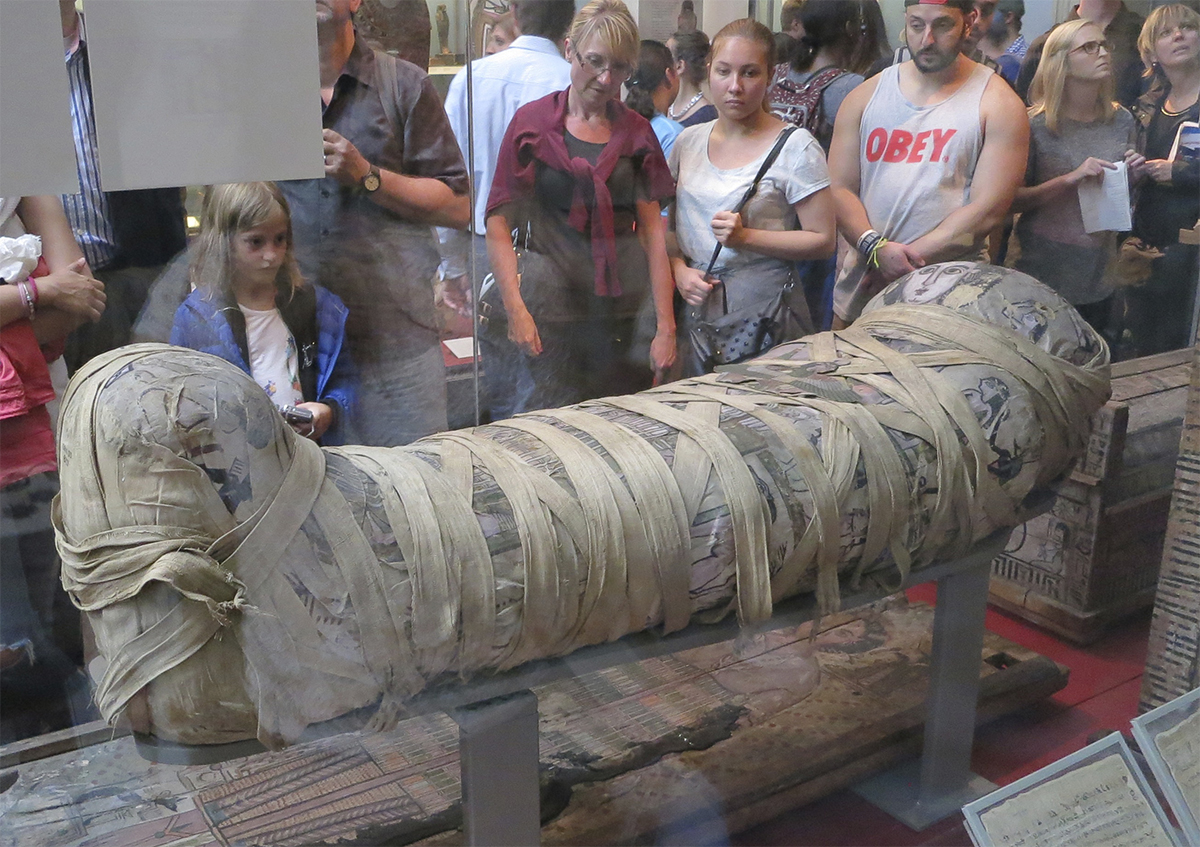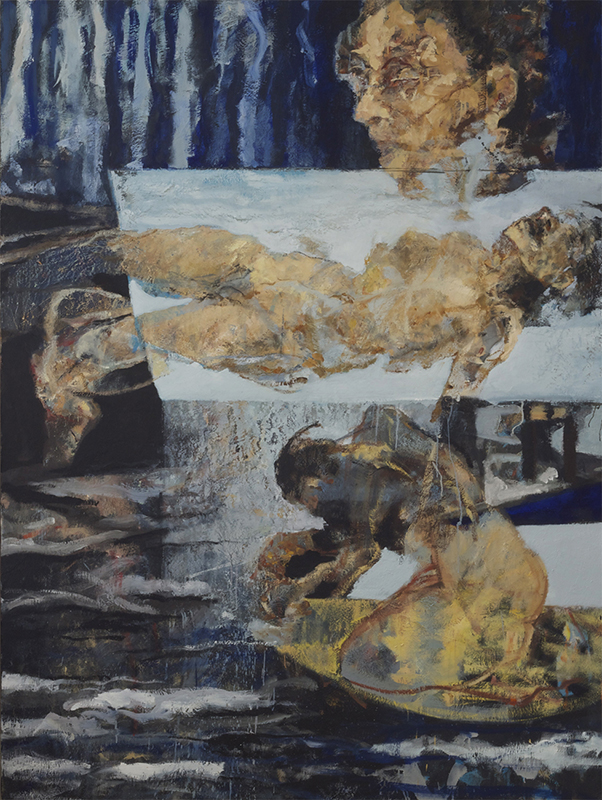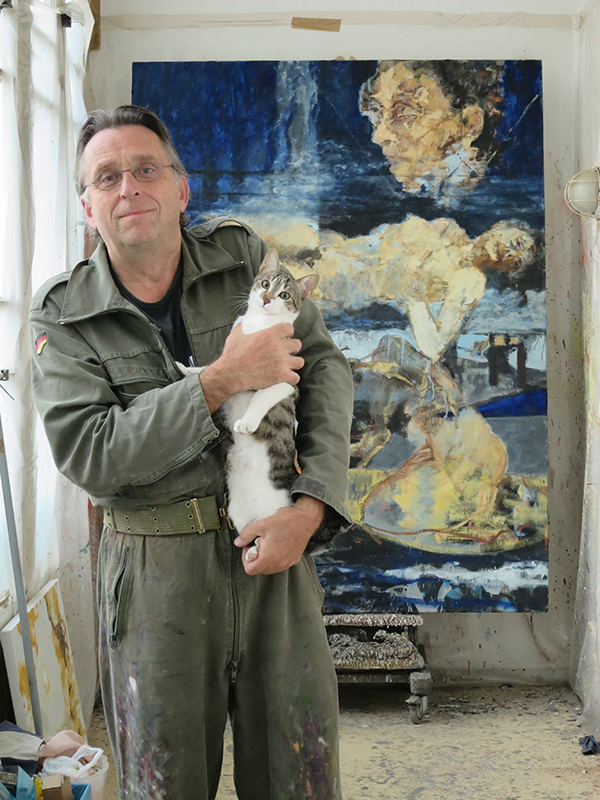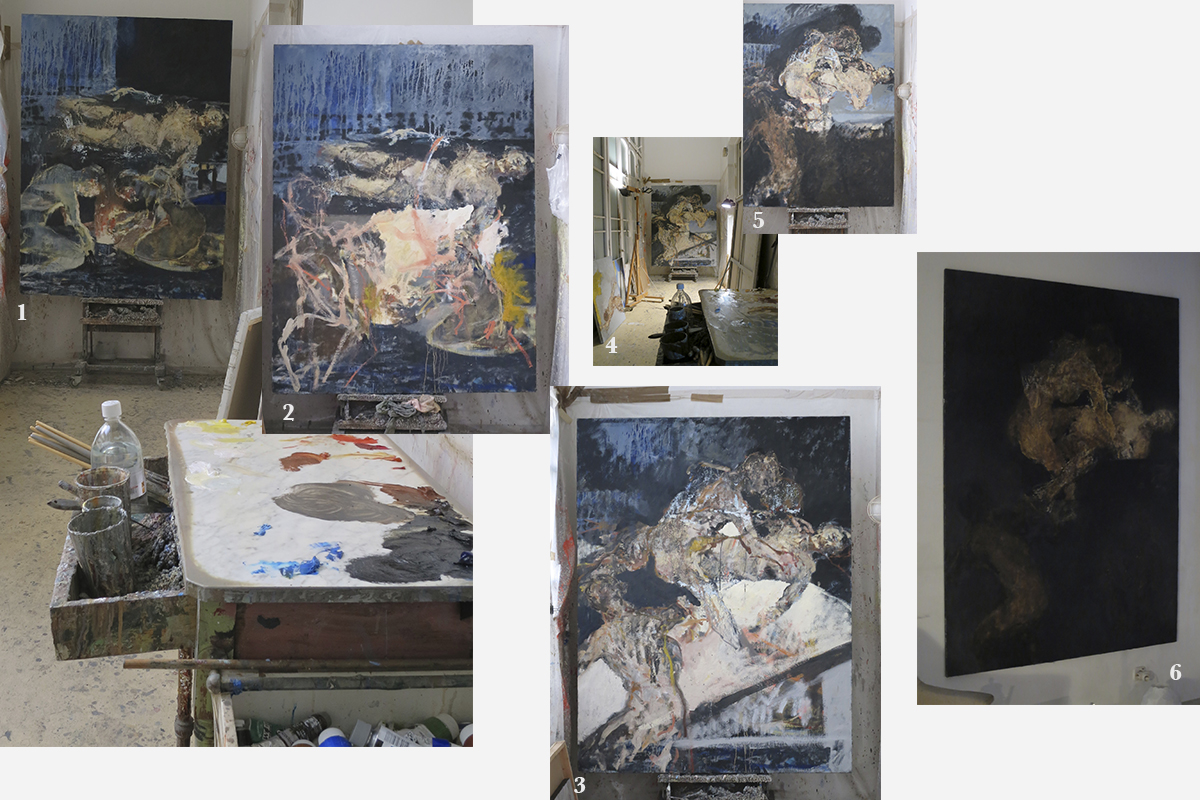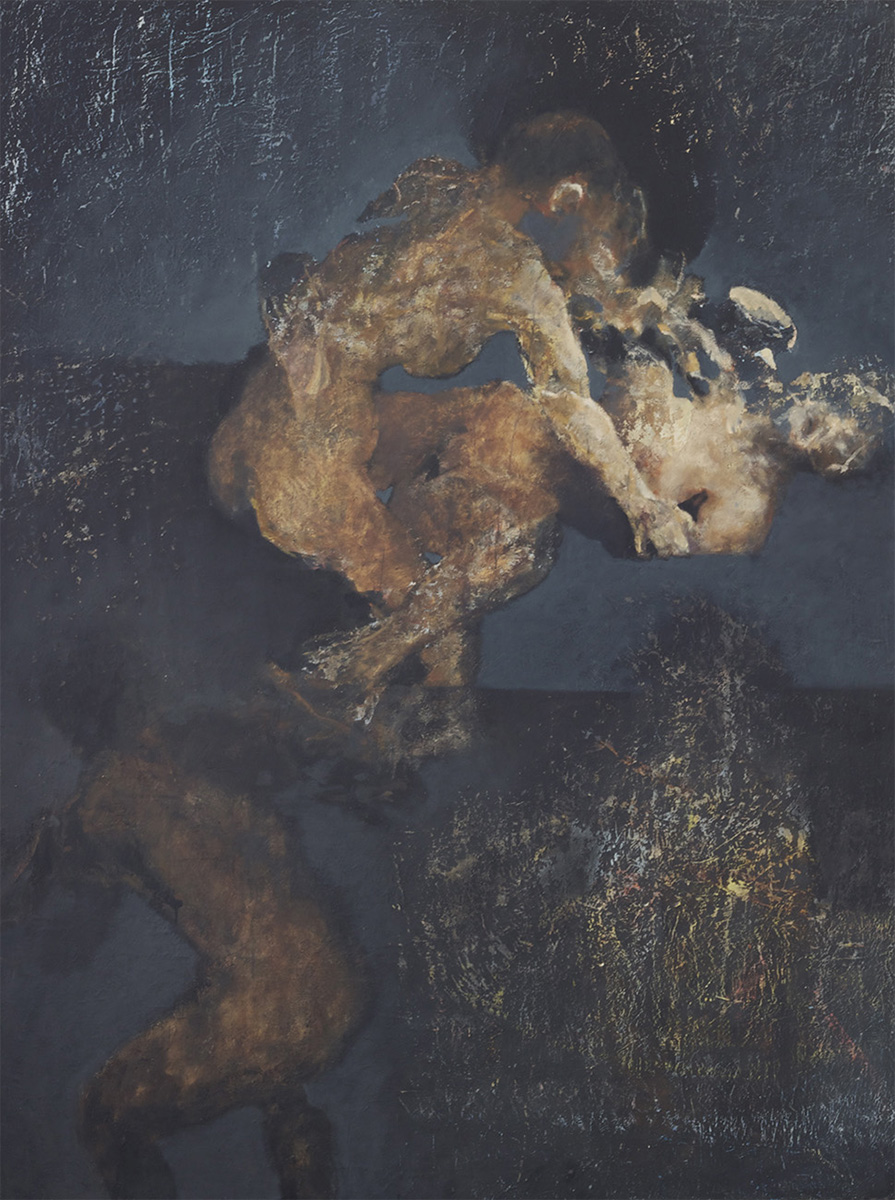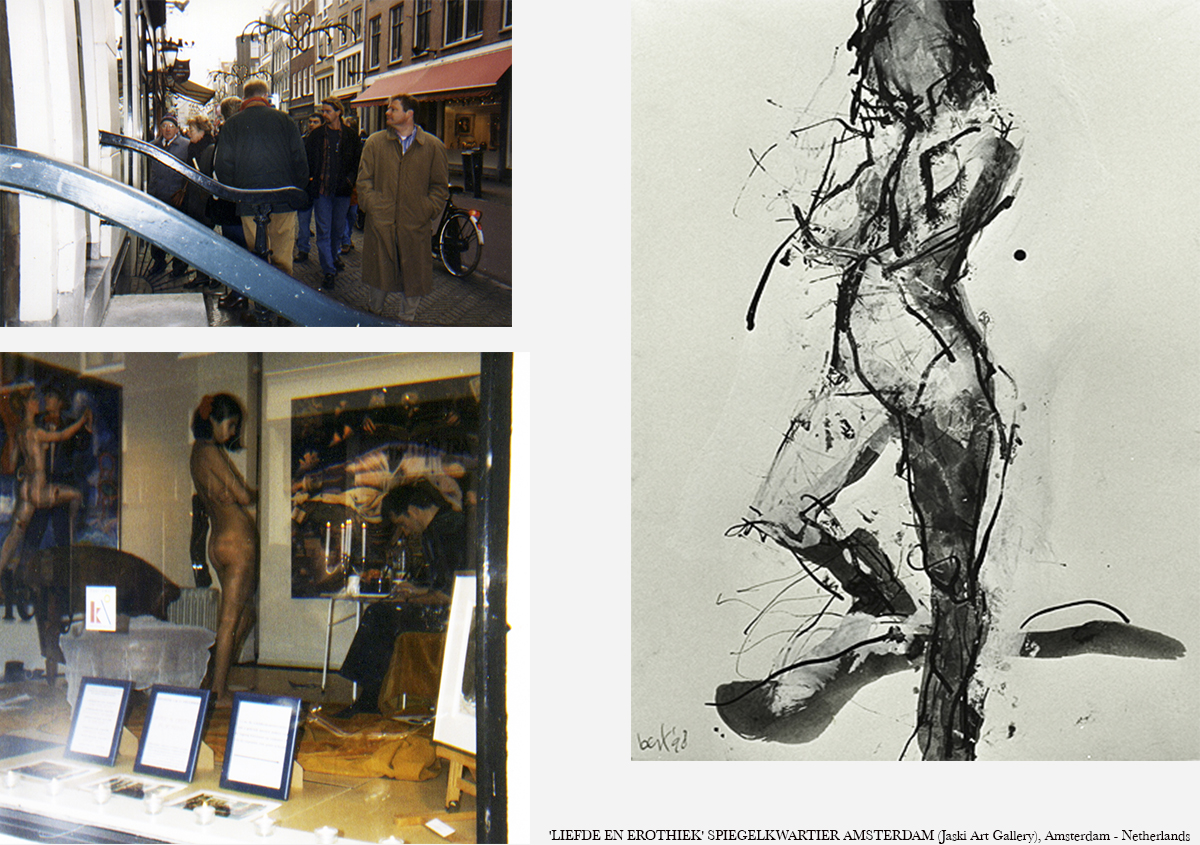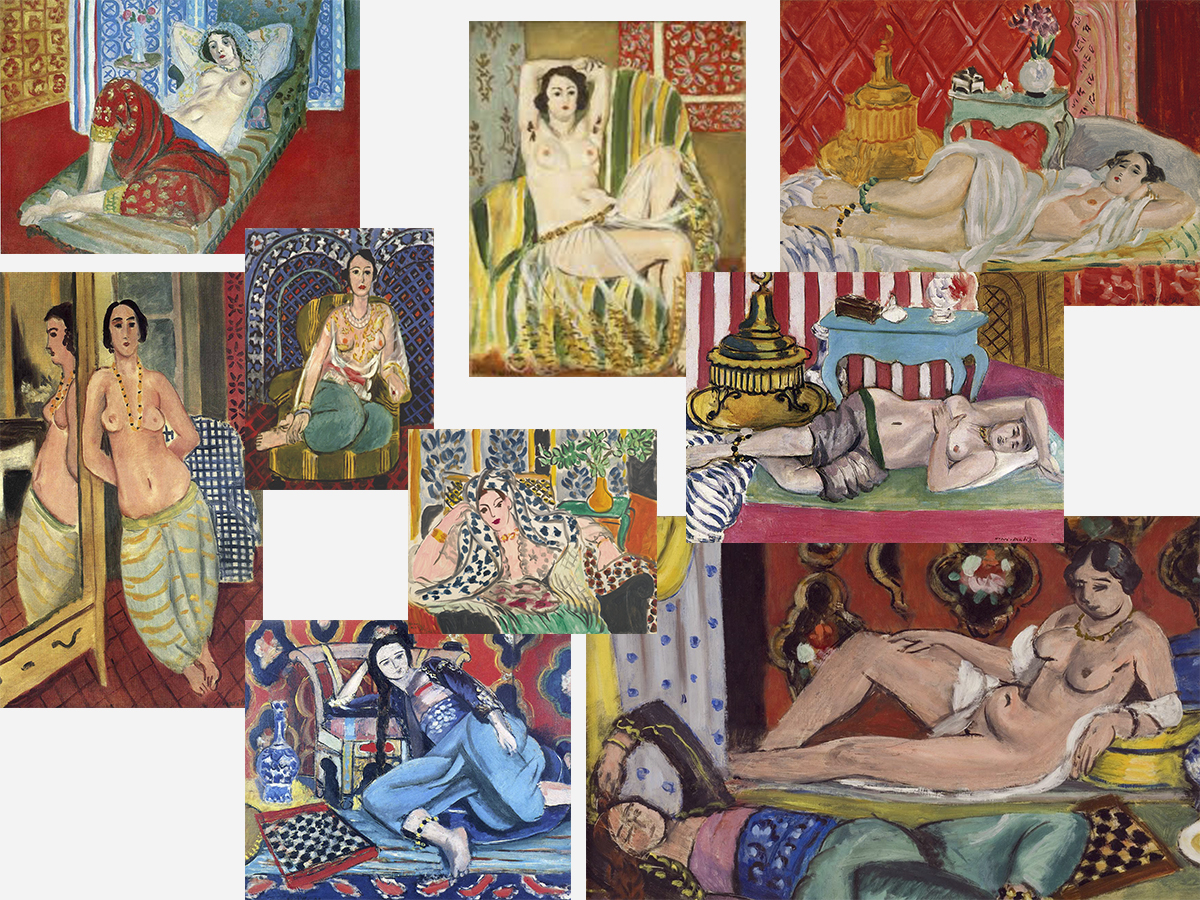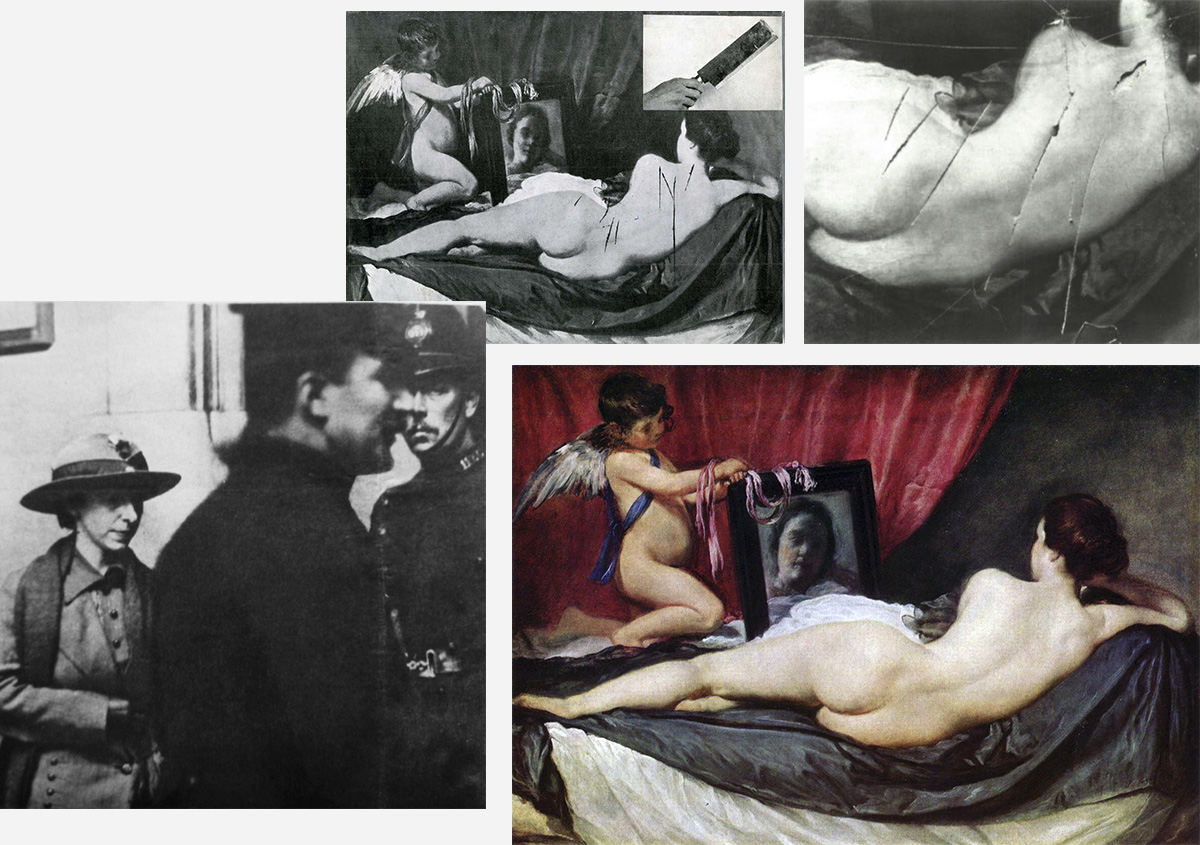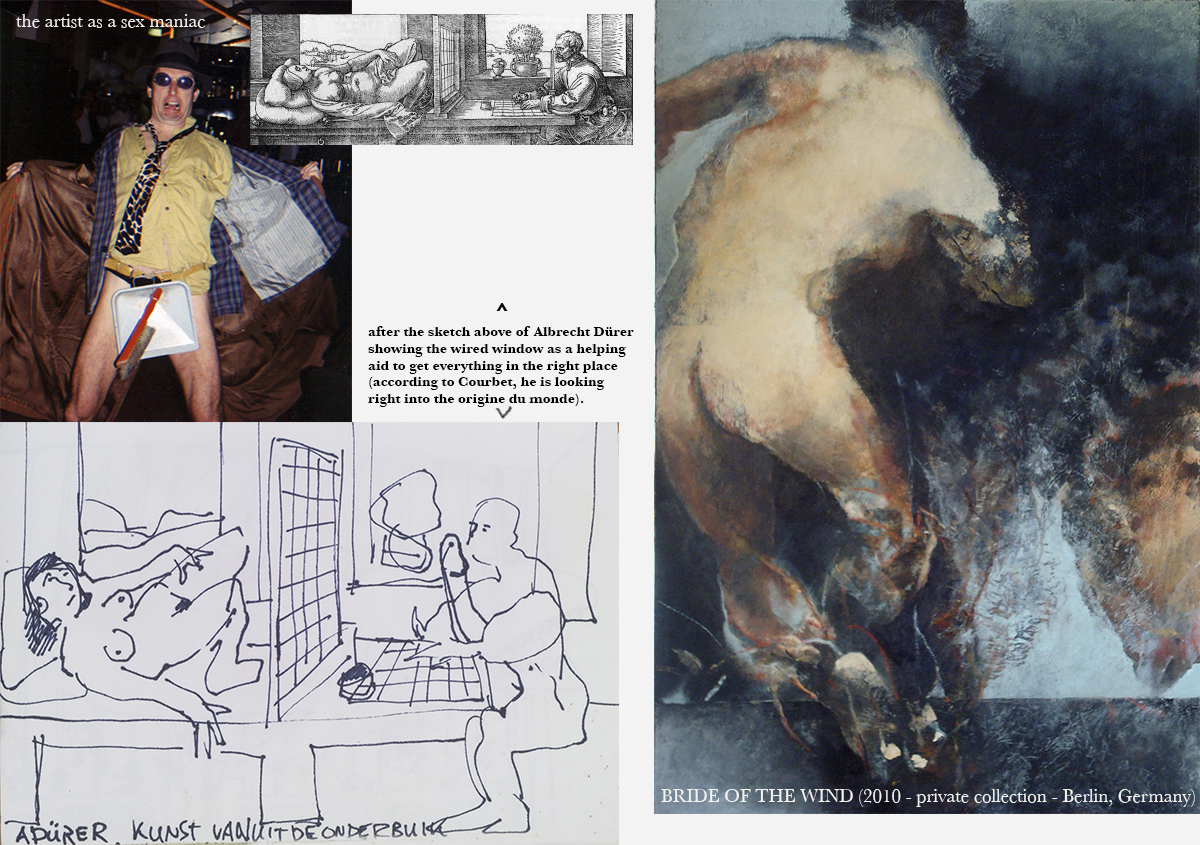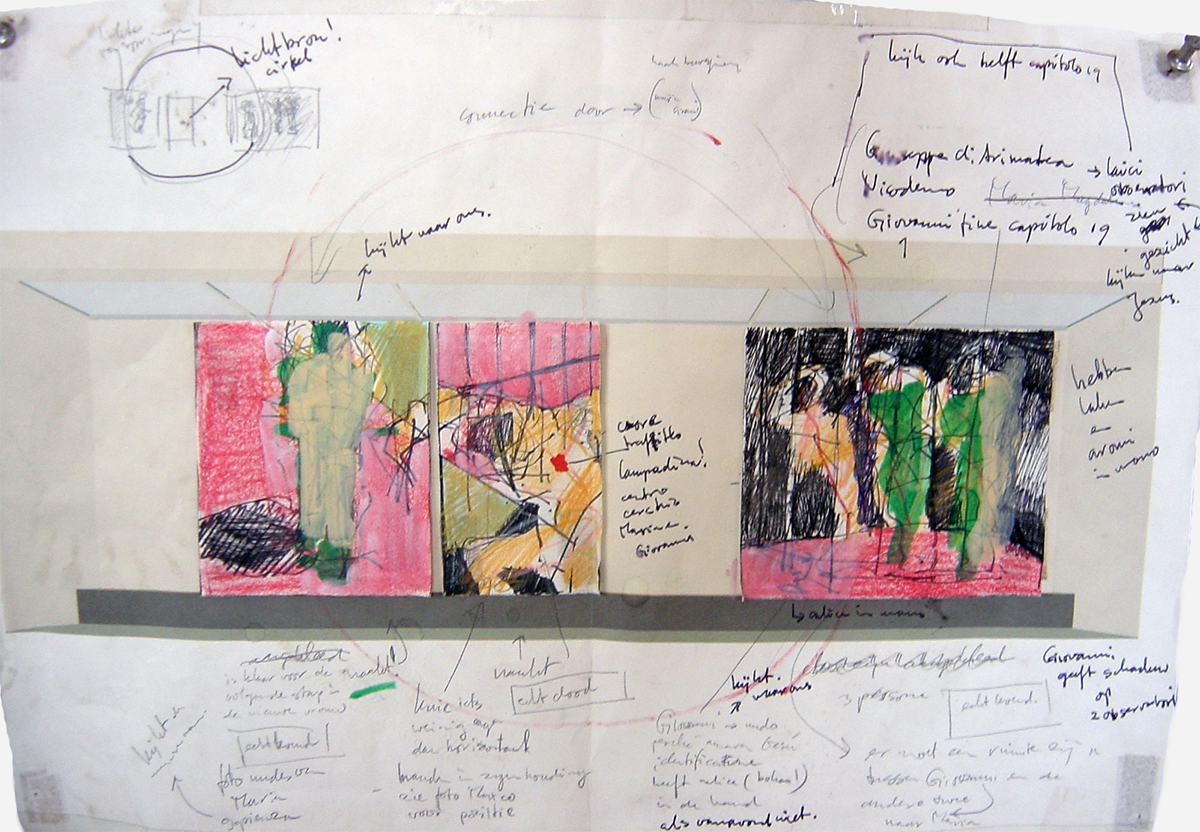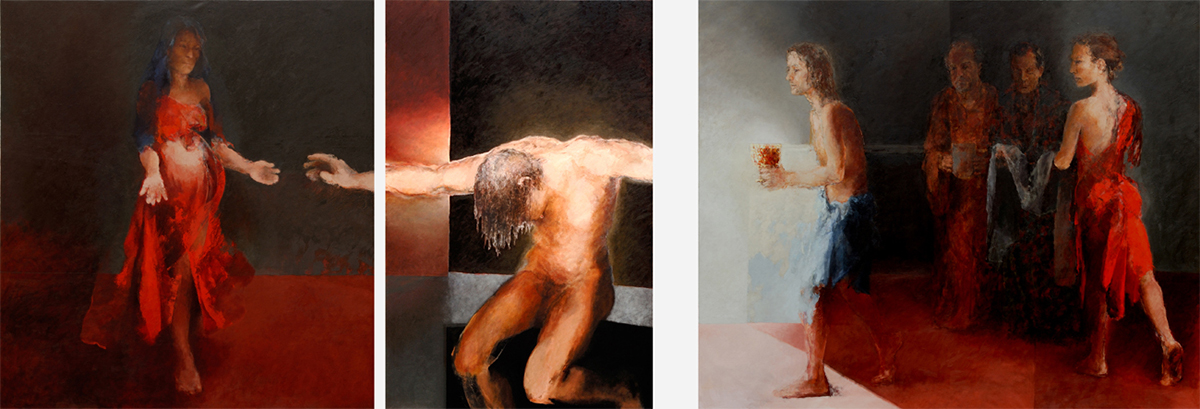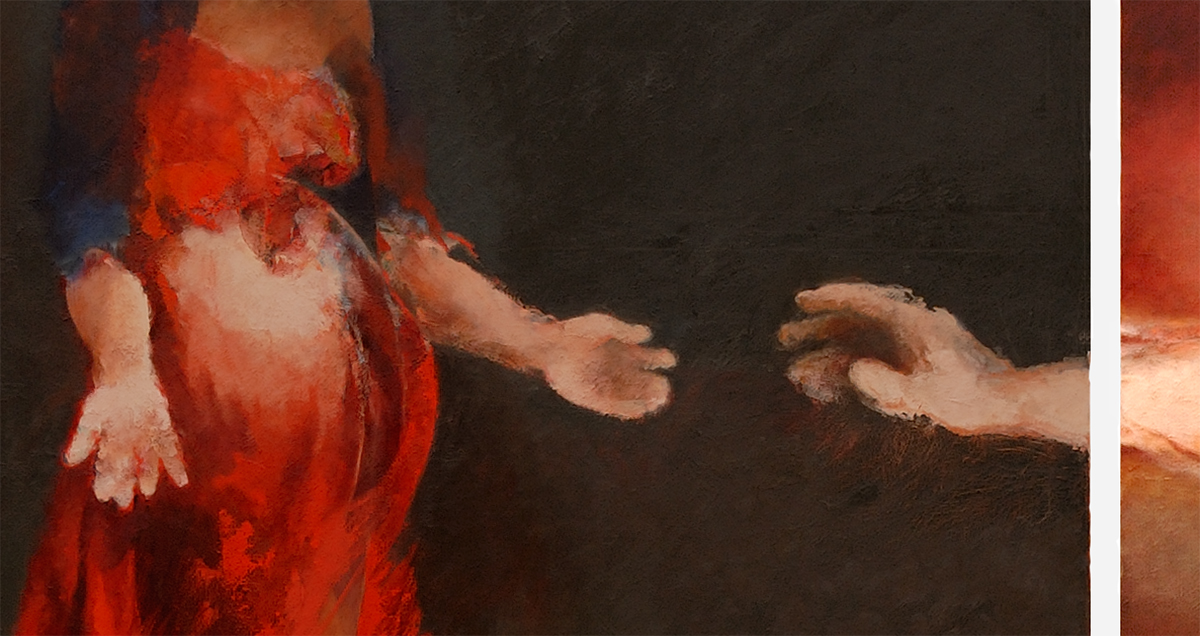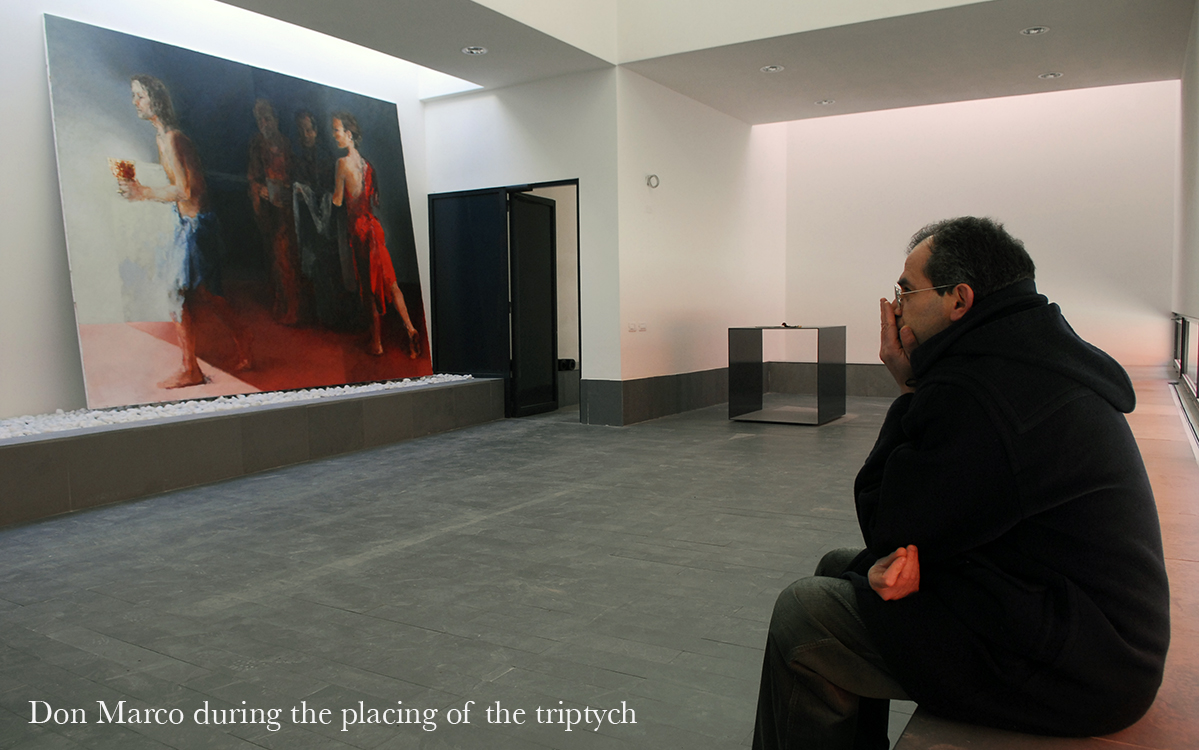03-09-2016: The chapter TECHNIQUES and progress
This week I have looked at the chapter TECHNIQUES.
(Click on the word 'TECHNIQUES'and the chapter will open in a new frame)
In many blogs I wrote about what for me is essential in painting. In the chapter TECHNIQUES you can find the heart of my thoughts about the how and why on the opening page. The following chapters talk about the different techniques I use.
text continues under image
One thing I want to pay attention to in this blog (also to be read on the first page of TECHNIQUES) is progress.
We often think things evolve in a linear way. I am currently reading ‘The man without qualities’ of Robert Musil (1933) and by replacing ‘Kakania’ for the European Union; I find a lot of parallels with what is happening and how we deal with it. History repeats itself.
I am more for evolving in a spiral way. We don’t go back and forth, we move on and pass by similar situations in the world and us in different time periods. The famous phrase: ‘what has been will be again, what has been done will be done again, there is nothing new under the sun’ (Ecclesiastes 1:9), appeals very much to me.
text continues under image
The same I find for the arts. The idea that art has moved from figurative to abstract, with abstraction as the end of the line, seems quite ridiculous. What about the Alhambra? We are captured in convictions of the time we live in and see everything through colored glasses.
In 1989 Arthur C. Danto (Narratives of the End of Art: ... But once art makers are freed from the task of finding the essence of art, which had been thrust upon art at the inception of Modernism, they too have been liberated from history, and have entered the era of freedom. Art does not stop with the end of art history. What happens only is that one set of imperatives has been lifted from its practice as it enters what I think of as its posthistorical phase...) wrote that we live in the posthistorical phase and I agree.
The big step forward is that we can now see that all is done, we can see the spiral; we see that no new territories need to be concurred. There are no walls to be broken down, no prejudices to be fought.
This gives enormous freedom. And I take this freedom to paint in as many different styles I want, according to what I want to achieve with the work I am making.
text continues under image
The sketches that illustrate this blog are from the sketchbooks page. They are here to make the blog a bit less heavy (as well as the video)...
(Click on the word 'sketchbooks' and that page opens in a new frame)
The video is Monty Pythons 'It's the arts'.
24-07-2016: HOW TO REACT IN THE ARTS TO ALL THAT IS HAPPENING IN THE WORLD NOW?
How to react to all that is happening in the world right now… Nowhere I see painters react in a valuable way to the latest events. And nobody asks the question why painters do not react, at least, nobody in my surroundings. Everybody is happy and on vacation…
Me too, it seems I just continue on the way I have been working.
Did my heroes react in their days? The first one I think of is Goya, his last series of paintings and the series of the disasters of war. There is the 'Guernica' of Picasso... I admire Max Beckmann very much and love this painting.
text continues under image
And there are the etchings of Otto Dix.
text continues under image
Another hero of mine reacted in a different way to the events. Rembrandt’s late series of self-portraits show a man who has compassion and has surrendered and accepted his fate.
text continues under image
The ‘human condition’… That is what I am after, if I am after something. I think of Francis Bacon… For years I painted canvases with exclusively that sort of subject.
text continues under image
'Spit and rain', 1989.
I try to integrate (give it a place) the madness that is present in all of us in my works (not always). Why do people kill without any remorse? I think to have seen, that that emotion is not even very far away in myself either. Not something to be proud of…
And there is the indifference…
And our love to give the violence a name foreign to us. It’s the ones that have other aims than we have. We are ok...
I divide my time between works in the ‘old’ style (now mostly bulls) and the flower paintings.
Paintings can also give relief.
I do worry. This worry with what I read in the papers is quite abstract. We are used to seeing so much misery.
But around me not all is pink and happy either. A dear friend of mine is in a very bad place and I cannot stop thinking about it. It is very present in my everyday thoughts. What do I do with that?
There is the story of Picasso painting the Guernica with Dora Maar and Maria Teresa Walter fighting over him in the studio and him using that as an inspitration for the painting...
Where do I stand? I should not lie. What can I do with all this? How will it come out, if it will come out? I feel very sad.
The video can be quite shocking.
18-07-2016: WHY I HAVE PROBLEMS WITH THE WORD 'CREATIVITY'.
We are children of our time. Every generation lives according to it’s own dogmas.
I grew up in a period where in the arts ‘creativity’ was a key word. We had to let our souls free, become a ‘Homo Ludens’, a playing human being.
In the nineteen-thirties Johan Huizinga in the Netherlands introduced the term. It became a big item thirty years later. ‘Provo’ and the ‘Kabouters’ were two movements to be part of in order to show our parents, that we wanted to shake things up and ‘put different glasses on in order to see clearer’.
I was, as you may say, victim of all of this in my youth. I have had many teachers telling me I had to let loose and break free. ‘Be creative! Away with tradition! Away with education! We decide for ourselves what is good for us!'
(Quite some of them went for this way of teaching, because they could not produce a decent drawing. Better play the ‘innocent child’. As if children are innocent and only education turns them in monsters. And what can you build on these paintings as a follow up).
I admit that it is good to throw a brick through the windows of the palace of arts (and please have a good look inside) in order to shake things up every once in a while, as long as it is done with humor.
I still have fun looking at the photos of the ‘Insekten sekte’ en the ‘Deskundologen’.
But once everybody is awake again, it is time to go back to what art really is about. That is not something like having a peanut butter floor in a museum created by one of the most overrated Dutch artists: Wim T. Schippers. I have seen to many of these objects in museums. They do not wake me up or make me feel shocked anymore. I just run to the next room. Seen it and done it so many, many times...
I am gifted with the talent of being a pain.
If people say black, I say white. If people say break loose, I say tradition. So I did not really brake free, I also wanted to study the old masters. I was and still am convinced that you can only break free in a profound way if you know what your chains are. And why not do something with those chains.
I had to think of this, seeing the show ‘New Babylon’ in the Haags Gemeente Museum with my daughter. ‘New Babylon’ is the creation of Constant Nieuwenhuijs. He designed the new city for the 'Homo Ludens'.
Did Constant have a solid education, needed for breaking free in the profound way? I don’t know.
But what I know is that Gala loved the show. She chose the building in which she wants to live and that is a plus. Going to a museum with my child and seeing her happy makes me happy too. New Babylon is great, dispite all the sixties blabla I dislike so much.
Should I adjust my convictions? Or just give space for others to belief their own dogmas? Of course mine too are no guarantee to create good art and I should not force others to go my way…
In the end one just fights paper tigers. Art neither obeys nor follows rules. Sometimes I get a bit tired of myself. The only thing that I am totally sure of is that one has to stay curious. Maybe the 'Deskundologen' can help me out.
video: Cor Jaring, a Dutch photographer who documented the wild sixties and seventies.
30-06-2016: PRETTY WOMEN AND WOMEN WHO WANT TO LOOK PRETTY IN THE ARTS
(Art talks about art. There is always the reaction on what was before. The idea that a piece of art can stand on its own is ridiculous. Only the absolute painting can be like that and that painting will never be made).
I was painting a nude in the style of ‘THE MIRROR’, ‘THE RAPE OF EUROPE’, ‘THE SKY SCRATCHED OPEN’, ‘SPAGNOLITA’ and ‘SHHH’.
I was well underway, but the head would not show up (see image of blog before this one).
I had the desire to make a painting in the ‘rough style’, but then with a positive and sweet expression. A sexy young woman!
I have made ‘heads’ of women in the 'rough style' (here are the heads), but never with a really sweet expression, a real contradiction.
What is the 'sweetest girl' in art history? A good contestant is ‘GIRL WITH A PEARL EARRING’ of Vermeer. Painted in a very smooth way, the opposite of what I was looking for.
One cannot compete with a painting like that, but as a don Quijote one should only challenge the best. It is no use going after small talents. This was what came out as a sweet expression… She looks a bit more inviting, I'd say.
Title: 'GIRL WITH A PEARL EARRING, of course... and off course I changed it, you don't fool aroiund with Vermeer!
I don't pretend to know better, I only want to challenge myself beyond my capacities and come up with what can be a surprise mainly to me.
It might come in handy.
Soon I have to portray a woman. The complication is almost always that women do not like to be portrayed in a ‘rough’ way. No hint in the direction of wrinkles, no heavy shading, no sculptured images. And that is what I like so much!
To do some ‘research’ I have decided to give myself a series of sexy women painted in black and white, going loose.
What struck me in most pictures that I downloaded, is the frontal lighting. All is slick. So little to hang on…
The video? George Michael: 'Freedom' of course!
12-06-2016: SHINY BRIGHT COLOURS! (FLOWER 030)
Back from Italy and inspired by Marino Marini, I started to paint in the old fashioned way. Finding the right balance between rough and exact. Leaving space for interpretation. Half way through the painting (a nude seen from the back) I got stuck.
I had had big plans; one night I dreamed the title for the ‘absolute painting’: ‘With time all dead flow into one’.
This was a new sensation, to have the title even before having started the painting. After ample reflection and having tried to make some sketches, I came to the conclusion that I will only be able to paint it, when I have become senile and reached the end of my life.
Never ever paint the absolute painting in the strength of life! What to do afterwards?
In the past I would have forced my way ahead. Now, thanks to the fact that I can work in different ways, I hopped over to the other way of painting.
I started a new 'flower' canvas, this time an iris.
image of iris on the easel and next to it the half finished nude seen from the back
Why do I make these flower paintings?
I am passionate about shiny bright colours. A subject that I have painted for years is butterflies. Butterflies as the series of 'Fallen Angels', I started after my New York days, later as the flying pieces of bright colour in for example 'Butterfly man'. I even confess to own a mounted butterfly...
From butterflies to flowers is a small step. Strong colours as seduction!
One inspiration that made me go in the flower direction I have talked about in my blog of 02-02-2015: Monet’s water lilies.
There were the flower-still-lives of Manet too.
What really did the trick was a show of the watercolours of flowers by Emil Nolde seen in the early 90's. These images stayed in my head for years and years. The intensity of the colours overwhelmed me.
a collage of flower paintings by: Monet, Manet, Nolde and me (who is who?).
But my interest in colours that light up actually goes further back than the show of Emil Nolde.
It started with a ruby… I saw the painting ‘Ritratto di giovane donna con liocorno’ by Raffaello Sanzio in the Galleria Borghese in Rome long, long ago.
How was it possible that the ruby gives light???
For years I was puzzled, also because the solution did not fit in my way of working as I found out.
To get a result like that one has to paint a series of transparent layers of colours over the white underground, preferably the original underground. And my usual way of working consisted and often still consists of painting layer after layer of thick colours, trying to surprise myself. Not by carefully calculating!
Art might be the only occupation in which inconsequent behaviour can pay off. In 2011 I started to paint flowers in the ‘new’ technique first in gouache, carefully calculating where to have the white of the paper playing the role under a thin layer of transparent paint. I showed the first results in the show in Laren.
Works in oil paint followed. First 'new' colour to present itself as a breakthough I had had for years, but never used: ‘old Holland red gold lake’. Someone gave me that tube and only with the ruby it got under my attention again. That colour transparent over white glows like hell!
My palet for the 'flower' works has become totally different from the paintings in the ‘old’ way. Here colours like ‘doixine mauve’, ‘manganese violet reddish’, ‘cobalt violet dark’ and the mad ‘old holland yellow green’ play a prominent role. It is fun; often they react different from expected.
And here we are, it is almost summer… Flower 030 is finished (click on the name and the painting appears in a new window). For the moment I cannot produce brighter colours...
The video shows the late Herman Emmink, singing 'Tulips from Amsterdam'...
30-05-2016: MARINO MARINI IN MILANO
Whenever I am in Milan I go to see the portraits of Marino Marini. He is most famous for his sculptures of horses and men on horses, but I am totally addicted to his portraits.
Now they are to be found in the museum of 900, which I find a pity. They used to have their own space (see the black and white photos). It was designed by Arturo Bassi (could not information about him on the net, who can help me out?).
Click on the grey museum of 900 and you will find information about the museum.
text continues under image

There was never anybody there. When I’d visit a guard used to follow me through the rooms. Like that he made his round accompanied by someone else.
And for years I had fantasies stealing some of the portraits. I even talked about it with a sculptor...
The space where they are now is very, horribly poorly lit, look at the portrait of Henry Moore. How to kill a sculpture… Even the sculpture behind him seems to have a headache… And then the way they are spread all over the space... Could it have been done more tasteless?
text continues under image

Let’s leave the museum the museum and look at the works.
Besides being art of today, MM's work is deeply rooted in the Etruscan art tradition. He was very concious of where he was born and grown up.
Years ago I fell in love with (this portrait of) the Etruscan Hera-Juno of Falerii.
text continues under image
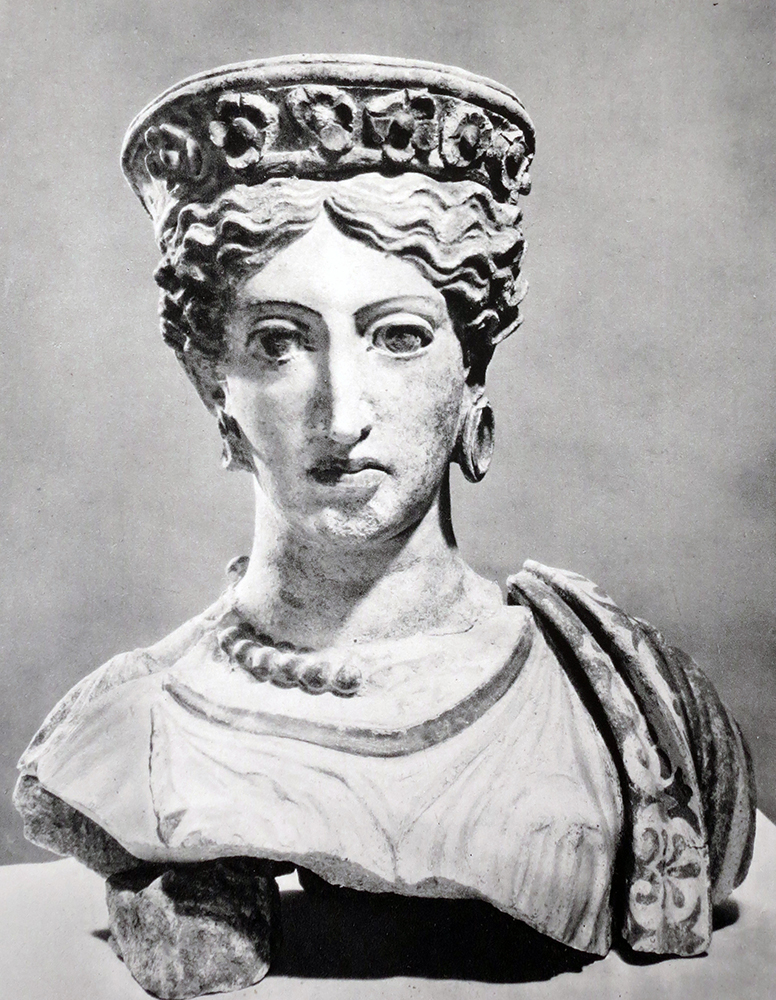
It is the simplicity of these sculptures that strikes me. Much of the Etruscan art has nothing to do with the over the top Hellinistic decadence. (It reminds me of why Rembrandt was not popular at the end of his life. The art buyers wanted ‘refined’ stuff. Rich societies often prefer decadent and over the top art). Etruscan art is nothing like that. No pompous detailing, no dramatic poses.
Here are some examples with two sculptures of MM (in color) in between them. Just to show my point. They fit in very well.
text continues under image
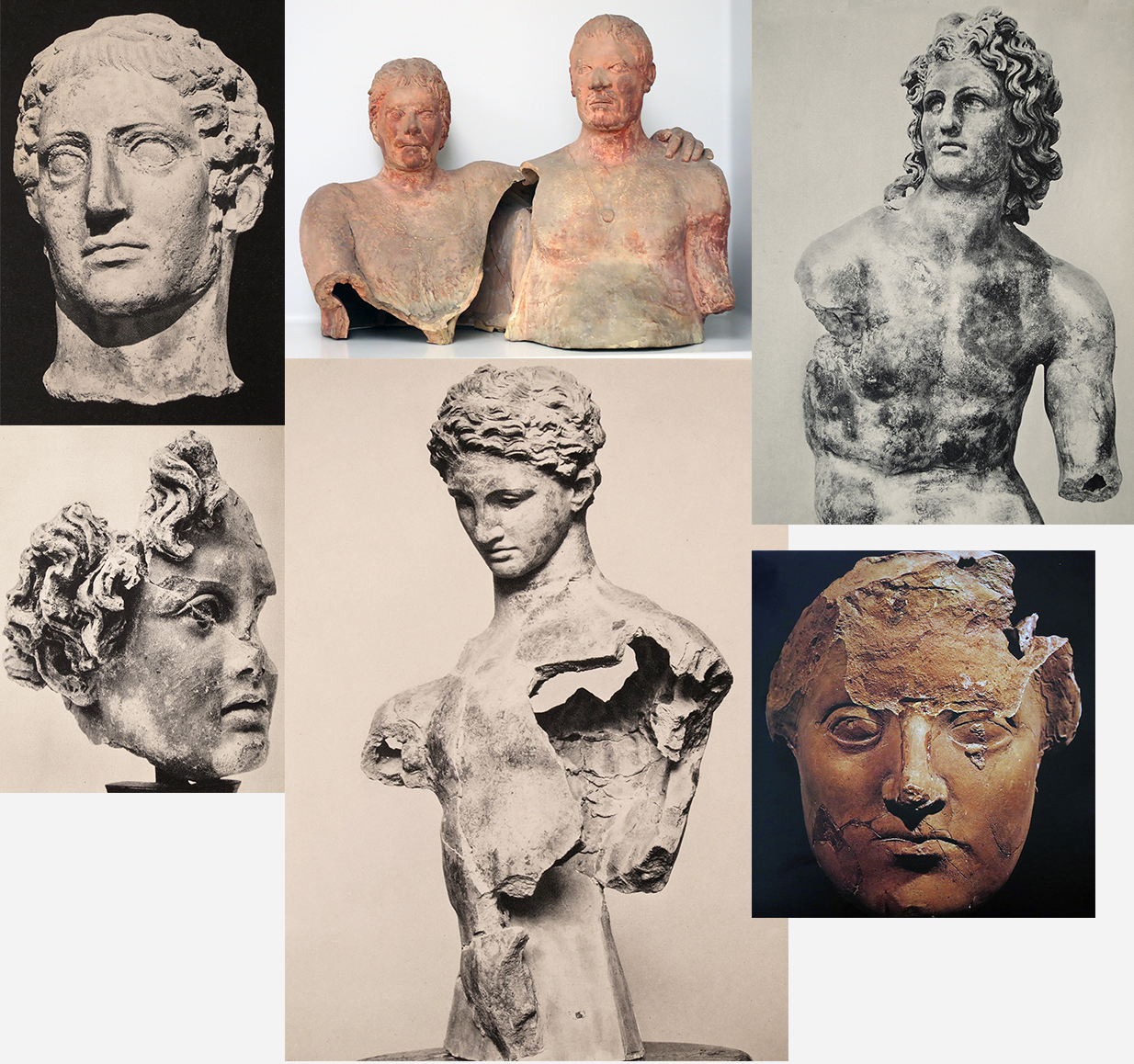
Another aspect of MM’s work that helps me while making my paintings is the balance he found between the finished and unfinished. You have the feeling ‘Marino has just left the building’. He played with the material, lets it talk in its proper language. And it leaves space for the spectator 'to fill in the rest', thus making it more one's own.
The ultimate example is the portrait of Mies van der Rohe.
text continues under image
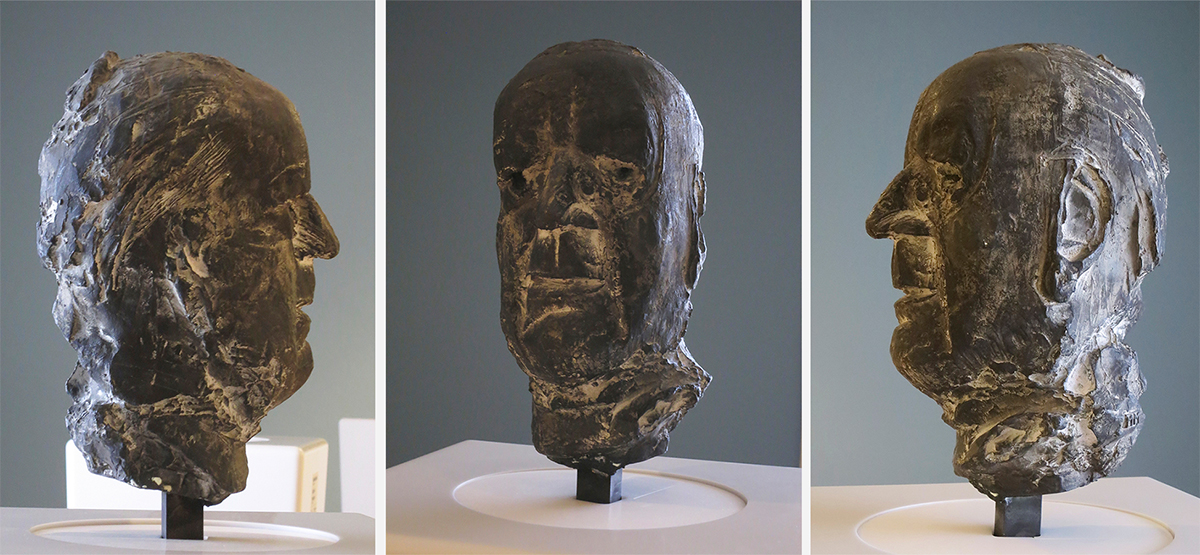
It may seem that he did not go for exquisite little detailing, but then have a look at the twinkle in the eye of De Pisis. Unfortunately it gets lost in the new place where it is exposed. I have to do it with the memory.
How to explain the greatness of these portraits? In the end words cannot explain. But if ever you are in Milano, go to see them!
text continues under image
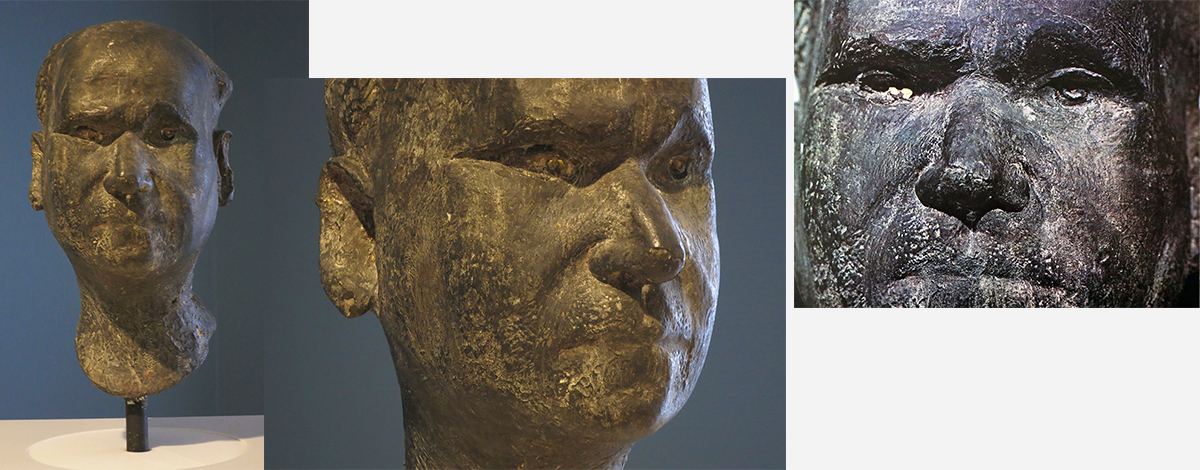
The video below is a compilage of several of his portraits. Amongst them: Igor Stravinsky, Marc Chagall, Mies van der Rohe, Filippo de Pisis, Carlo Carrà and Henry Miller. Enjoy!
09-05-2016: THE MOST BEAUTIFUL MUSEUM IN THE WORLD
During my trip through Italy, I visited the museo Castelvecchio in Verona. For the first time in my life I did not look at the artworks. I only looked at the museum. (Click on all the grey names and in a new window you find more information).
text continues below the image
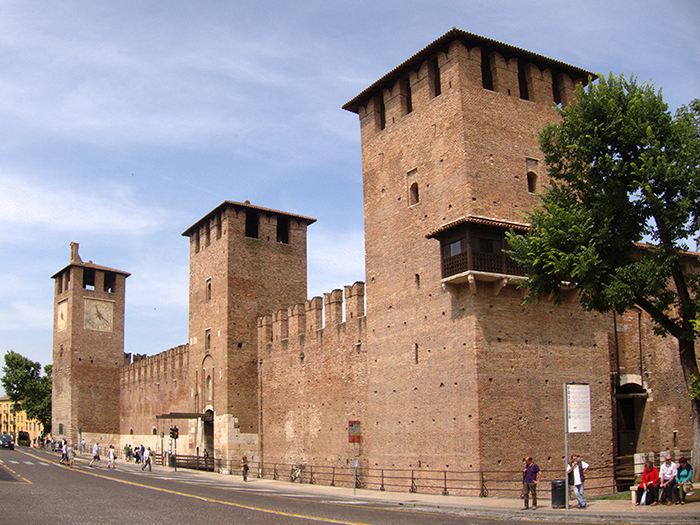
The museum was reorganized and redesigned by Carlo Scarpa between 1958 and 1975. Not an architect unfamiliar to me, but apart from the museo Rovoltella in Trieste, the entrance of the architecture faculty, the Olivetti shop and a bridge in Venice, I had not seen much of his work in real life.
text continues below the image
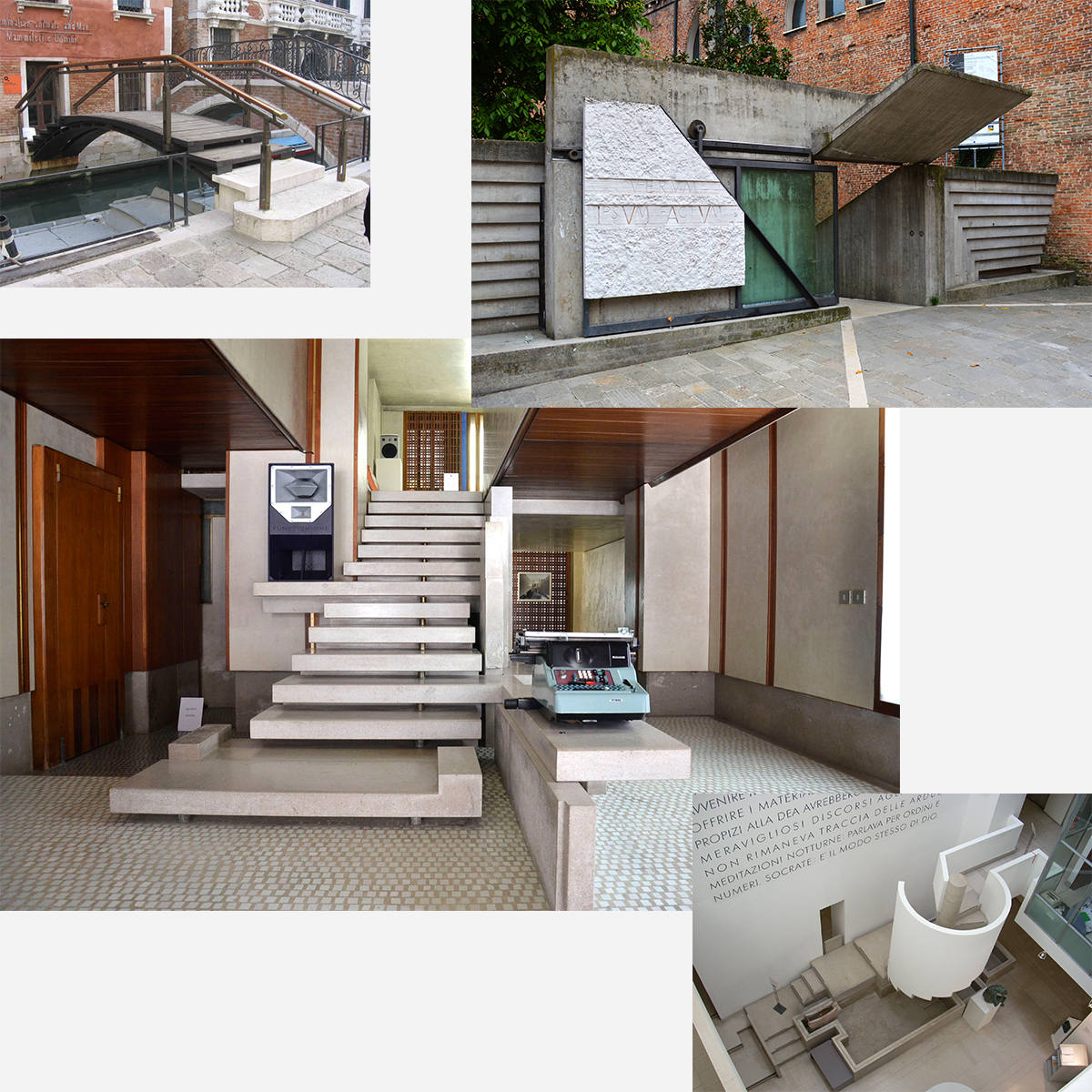
How do you turn a half destroyed fortress with Gothic elements added into a magic place? There is so much to tell and yet nothing to say. One just has to visit the museum and be overwhelmed by the exquisite taste in detailing, the balance between space and object, the use of materials and the modesty of all.
Well, maybe not really the modesty, as I said, I did not look at the artworks…
He showed that one has never to stop playing. The way he placed the statue of Canalgrande in the void has nothing to do with straightforward logical thinking. It is pure poetry, total madness and at the same time it seems the very best and most beautiful solution. In the video I show a selection of the photos I took.
text continues below the image
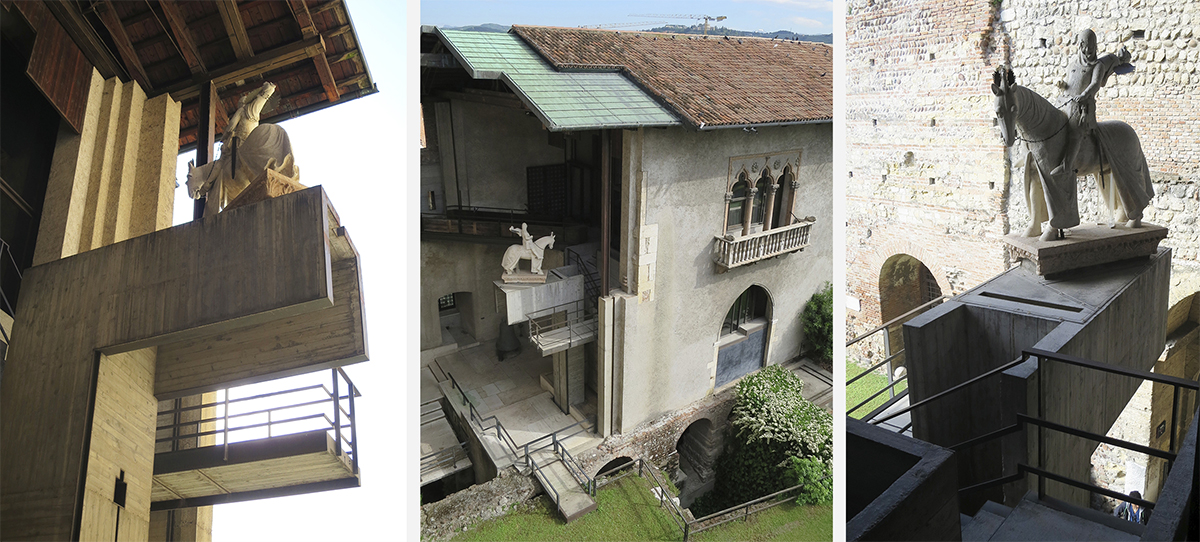
Last stop on my trip was Venice. And there I saw the new Gallerie dell’Accademia, recently reorganized by the son of Carlo, Tobia Scarpa. You see very clear the hand of the father.
text continues below the image
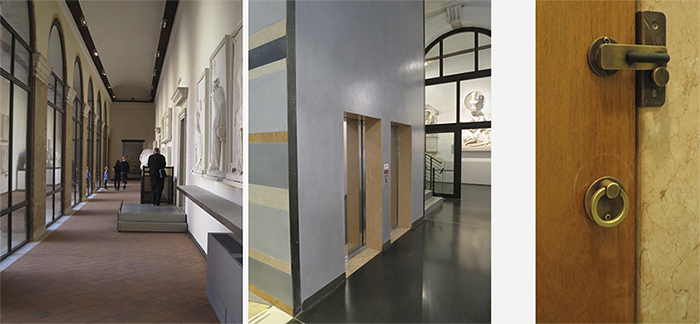
To finish it off; I stayed at Sergio Pascolo's place in Venice. And to my very pleasant surprise his architecture studio is in what used to be the studio of Carlo Scarpa!
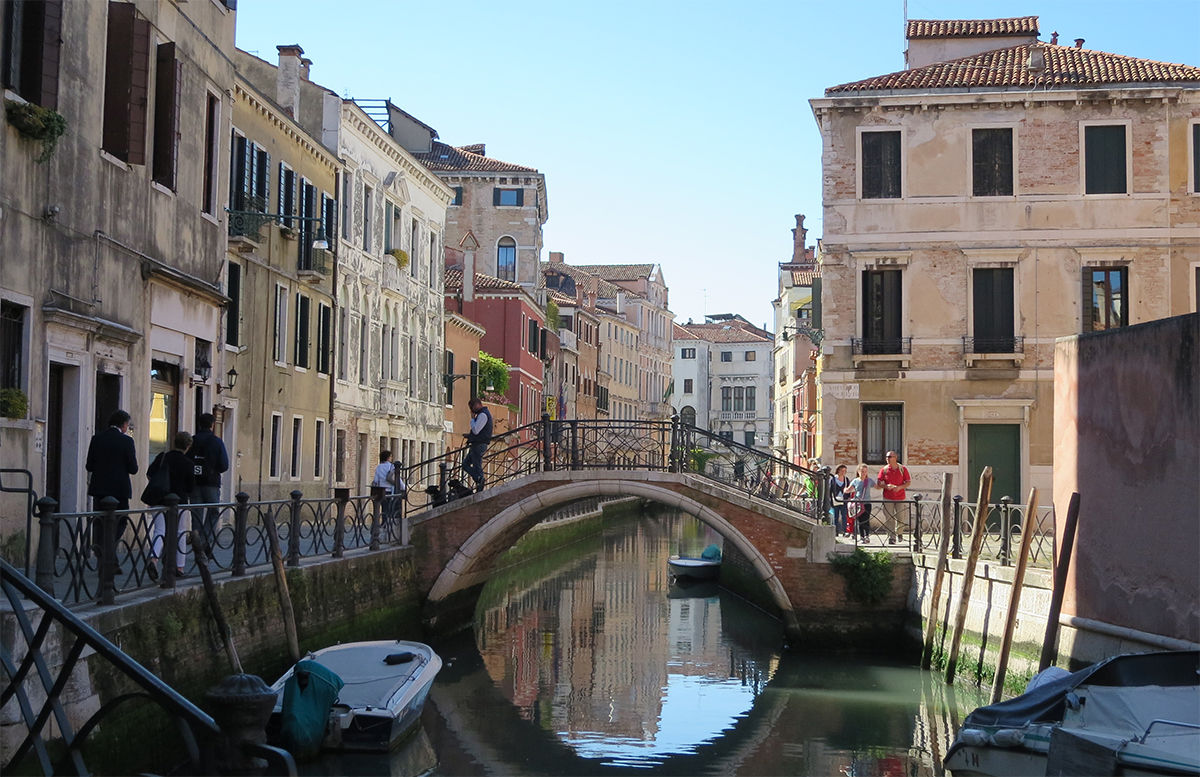
Enjoy and if you want, you can leave a comment below!
17-04-2016: the painting: 'AU SUIVANT'
I finished the painting ‘Au Suivant’ not long ago. It is one of those canvasses that went through a long process before it was done. It belongs in the ‘series’ of ‘Le Sacre du Printemps’, ‘Ecstasy or the Puppeteer’, ‘Shhh’, ‘Setting Sun’ and others.
Text continues under image
I took a canvas called ‘Fist’, that if I remember well I finished in the early nineties. No use being sentimental, I never sold it, looked at it long enough to get bored, so why not use the canvas for a new painting?
The idea for the 'new' canvas was given by the visit with Gala to see the mummy of Cleopatra in the British Museum.
Text continues under image
See below:
Painting finished! I put it on the site and some people loved it. I asked for a title and thank Tove Seeland for having given me the beautiful: ‘All the things we forgot to say to each other’.
Text continues under image
But… something irritated me. I had the feeling that I left it halfway. It was not tight enough and it looked too much like a caricature, a loose statement. It stayed locked away for a couple of months and then I went back to it.
First I changed the laying figure. The space she was laying in was still something of an aquarium, but became darker. And the big head started to breath.
Text continues under image
This way of painting is trial and error. I put a second figure underneath and took away the big head on top (1 in image underneath). The big head had stayed there because I liked it, but never really made sense to me. The breathing did not convince me either. The two figures at the bottom were making a fire. Fire is always good to put in a painting. It is violent and it is light. It made more sense to me...
But then the whole bottom went on fire (2 in image underneath).
Text continues under image
The seated figure on the bottom left stood up and the figure on the bottom right disappeared (3 in image above) and reappeared mounting the laying figure…
Things were starting to fall on their places. I love to play with shadows and the tension they can give (4 and 5).
I gave up the idea of a bright painting and in my over enthusiasm was left with a solid but too monochrome canvas (6: thinking about Mies’ credo: ‘less is more’).
I left it alone for a week and then gave it the last and decicive kick.
Here it is: 'AU SUIVANT'!
click on the image to go to the image on the site to see more details. text continues under image.
The name I stole from the chanson of Jacques Brel. I do not like to explain the meaning of the painting, just read the text of the video…
(This also because a painting 'happens to me' if all goes well, so I do not like to then direct it somewhere I want. I don't give a moral, I show).
